
Our Places
Redrow is committed to creating Thriving Communities, places where people can thrive, with beautiful open spaces for residents to enjoy and amenities that encourage neighbours to come together.
The experience of the COVID-19 pandemic and the resulting lifestyle changes have influenced customer requirements. We have found that our particular approach of delivering high quality spacious homes set in well designed landscape-led places is exactly what people are looking for, now more than ever.
The Importance of Placemaking and Design
Redrow 8
Our ‘Redrow 8’ placemaking principles, now in place for over two years, continue to be a robust set of commitments that are demonstrably delivering the types of places where our customers want to live. The eight principles, which were developed with our customers’ needs in mind, provide a framework for the creation of beautiful, sustainable, well connected and well landscaped places that incorporate nature and are pedestrian and cycle friendly. They deliver places where people have the choice to live a sustainable lifestyle with opportunities to make green travel choices, in particular making it easy and safe to walk or cycle as well as having space to charge an electric car. Our eight design principles have proved to be very effective at creating accessible places for everyone, that are beneficial to health and well-being by providing destinations such as walking and running loops, allotments, outdoor gyms and meeting places. High quality landscaping, the integration of thoughtful blue and green infrastructure (the combination of ponds, streams and drainage features, like swales with open spaces and landscapes) delivered early on together with the incorporation of nature (through our Nature for People principles and our commitment to biodiversity net gain) delivers positive outcomes for people’s health and welbeing and for local wildlife.

Our Redrow 8 placemaking principles and measures, which were developed with advice from leading independent urban design experts, are being used by all our divisional teams to guide and shape layouts and masterplans. To date over 75% of emerging designs have been assessed and benchmarked using the Redrow 8 scorecard and this will increase to 100% by the end of the new financial year.
This internal assessment tool highlights at an early stage any areas of the draft design that need to be revised or refined to successfully deliver our placemaking vision and ensure that our new communities are the best they possibly can be for our customers and the existing community. The assessment tool also provides a ‘Health and Wellbeing’ score which provides an indication of how healthy the resulting place will be. Again, this process means we can adjust and refine our design approach as necessary to deliver new developments that provide for healthy lifestyles. For example, the tool asks if we can do more to integrate green travel options or green and blue infrastructure.
As Wales has its own planning system we have developed a specific set of Redrow 8 design principles for use on our developments in Wales. These were created through a series of workshops with key design stakeholders and experts including the Design Commission for Wales, Play Wales, Public Health Wales and the Wildlife Trusts. This has resulted in the publication of a design manual this year and the creation of a Wales-specific Redrow 8 scorecard which is now being used to assess and shape our developments there.
With our eight principles now firmly embedded in our design approach across the Group, this year we launched an annual awards process to recognise great place making across our divisions.
With an award for each of our eight placemaking categories it is also an effective way to demonstrate what ‘good’ looks like and how we are delivering beautiful sustainable places to live. Each of the Redrow 8 principles has a ‘stretch measure’ which seeks to push us beyond best practice and many of the awards have been for this level of exemplary placemaking. We received over 50 entries from across our divisions with the winning developments selected by a judging panel in June 2021. The winning developments are showcased on pages 30 to 33.
Our commitment to community collaboration and consultation
The first of our 'Redrow 8' principles is 'Listen to Learn' which is a commitment to listen to and engage with local communities from an early stage so that we can incorporate local views into our design vision. This means using a range of methods from the earliest stage in the development of a concept to capture local views and then consulting them as the design develops. On all of our projects we strive to:
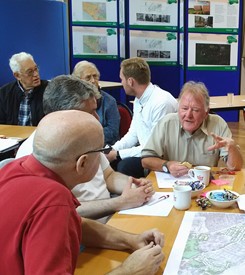 Present the vision and design concept for the proposals to the local planning authority and others in advance of developing a detailed design where possible;
Present the vision and design concept for the proposals to the local planning authority and others in advance of developing a detailed design where possible;- Hold community consultation or collaboration events to present the proposals, discuss potential revisions and gather feedback;
- Consider the views of the local community in shaping the proposals;
- Involve the local community in design and placemaking opportunities;
- Hold events within the new development for the new residents as it develops to help establish a sense of community; and
- On larger developments hold regular meetings with the new community and existing wider community, provide updates through newsletters and set up a community website page.
We have developed a 'Participation Guide' unique to Redrow which sets out principles for the planning, communication and follow up of all community consultation and collaboration events. These 18 principles ensure that we provide maximum opportunity for involvement and comment from the whole of the community, we listen to and communicate clearly and we continue communication through the build programme and beyond.
Image: Community Collaboration Consultation
Listen to Learn
Winner: Plasdŵr Garden City
Plasdŵr has won this year’s Listen to Learn award in recognition of the exemplary approach taken by the team to engage with local communities and other key stakeholders in the design and delivery of a new Garden City for Cardiff comprising up to 7,000 new homes within five walkable neighbourhoods.
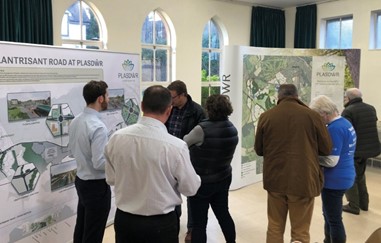
From the start of the design process an open approach has been adopted to ensure that all of the existing local communities and key stakeholders are fully informed of proposals as they developed and that they had the opportunity to comment at every stage.
We worked closely with a range of local stakeholders and refined the design approach to address comments wherever possible. This collaborative approach continues as the scheme vision turns into reality through the commencement of starting infrastructure works and the construction of homes. The local Redrow team hold regular drop-in meetings for the local communities, send out newsletters and have established a continually managed ‘get in touch’ direct email account and the appointment of a Plasdŵr specific Community Liaison Officer. The scale of Plasdŵr, bordering several existing community councils, and its significant strategic importance for Cardiff and the wider region means engagement has been a key driver in establishing long term relationships with all stakeholders.
Keeping it Local
Winner: Horsforth Vale
Our recently completed Horsforth Vale community in Yorkshire has won this year’s ‘Keeping it Local’ award. This mixed-use new community comprising 500 new homes of a wide range of types and tenures as well as a café/bakery and shop already sits comfortably within the local area and brings benefits to the existing and new community.
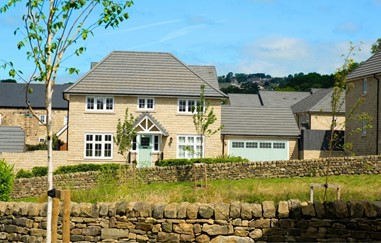
We have used local materials including York stone and slate roofs together with dry stone walls to knit the new development into the wider landscape and ensure it reflects the local character.
Despite the fact this was a ‘brownfield’ site and the location of a former chemical plant, the Yorkshire division worked carefully to retain existing features and landscape on the site and weave them into the new development.
For example, a former historic mill building was restored and re-imagined as apartments and the mill pond was also restored. Existing landscape features such as mature trees and hedgerows were retained and incorporated helping to knit the new community to the area and the wider context. This approach also contributes to a positive impact on biodiversity as well as a sense of belonging from the very start.
Easy to Get Around
Winner: Amington Green
Amington Green has won the ‘Easy to Get Around’ award for its comprehensive network of pedestrian and cycle routes.
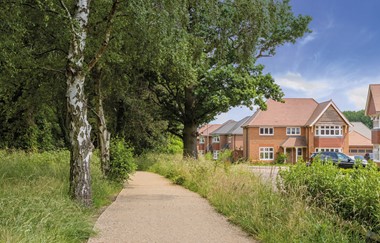
Once complete, Amington Green will be a mixed-use community comprising a total of 1,100 private and affordable homes, a new primary school, a new local centre and 25 hectares of new open space.
All of these new facilities and destinations will be easily accessible from every home via attractive tree-lined streets, quieter ‘shared surface’ streets as well as a network of footpaths and cyclepaths running through the green and blue infrastructure network.
This network connects to the wider movement network and to other local destinations as well as making the new destinations and green spaces accessible to the wider existing community. This pedestrian and cycle network will mean that sustainable transport options are available to all residents and that opportunities to live an active lifestyle are embedded and encouraged in the community from an early stage.
Places to Go and Things to Do
Winner: Ebbsfleet Green
Ebbsfleet Green is the winner of the ‘Places To Go and Things To Do’ award for its fantastic choice of facilities and destinations for the new community.
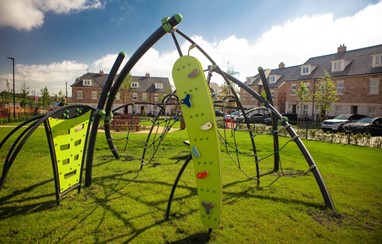
Our 905 homes (including a mixture of private and affordable homes of a wide range of types from detached homes to apartments) are arranged as a walkable community with all everyday facilities provided within a short walk of every home and where green travel options are practical and attractive.
In addition to the homes we have delivered employment space, a hotel and pub, a convenience store, an outdoor gym, a series of trails and nature areas, two play areas and we will soon be delivering a new primary school, community centre and allotments. All of these facilities are provided within an easy, safe and attractive walk from every home ensuring that a sustainable neighbourhood with a vibrant sense of community is delivered.
This walkable community in turn forms part of the wider Ebbsfleet Garden City which has a further supporting selection of facilities that are easily accessible from Ebbsfleet Green.
Nature for People
Winner: Caddington Woods
This year’s ‘Nature for People’ award goes to Caddington Woods where we are providing eight hectares of new open and natural spaces and where we are delivering a 63% net gain in biodiversity.
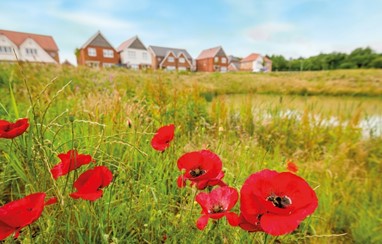
Woodland areas have been retained, incorporated into the development and enhanced so that they make a significant contribution to biodiversity.
We have also used sustainable drainage techniques to create attractive ponds that are also great for nature as well as improving the existing ponds and creating new habitats for wildlife including species-rich grassland and native shrub planting.
All of these features are incorporated into a multi-functional green infrastructure network that includes play areas as well as walking and cycling routes. Our team successfully worked closely with the RSPB to establish the best way to manage and improve the woodland for wildlife.
Streets for Life
Winner: woodford Garden Village
Woodford Garden Village is our winner of this year’s ‘Streets for Life’ award for its beautiful hierarchy of streets from tree-lined avenues to intimate quiet, well landscaped, community streets.
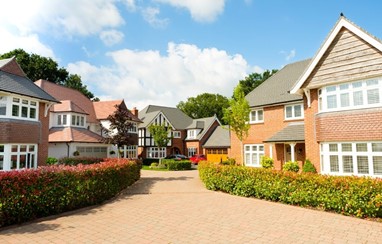
The 920 home development will, once complete, comprise a mixed tenure, mixed-use community containing a primary school, local centre, pub and a wide range of green routes and spaces all linked together by a network of beautiful streets.
The Woodford Garden Village masterplan is based on a network of green and blue infrastructure routes and spaces including swales and ponds which not only provide an attractive setting for footpath and cycle routes but create a robust network for wildlife.
This provides a framework for a legible network of streets that ensure that it is easy to navigate and get around and the landscaping strategy has ensured that every street has been designed with an attention to detail in respect of surface materials and landscaping. High quality trees, impressive hedges and attractive lamp posts all combine to create inviting and pedestrian friendly streets.
Homes for All
Winner: Colindale Gardens
Colindale Gardens has won this year’s ‘Homes for All’ award for its wide range of housing tenures and types.
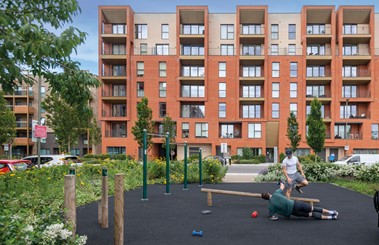
As well as private housing Colindale Gardens will deliver a significant proportion of Private Rented housing as well as affordable homes to rent and for shared ownership sale. Overall, 35% of the homes will be affordable and the development will deliver a wide range of housing types across all tenures from one, two and three bedroom apartments to townhouses.
All homes are tenure blind and integrated across the masterplan meaning that the new community becomes embedded from the beginning.
Together with the proposed 10,000sq.ft of retail and commercial uses, a new primary school as well as a network of open spaces, this balanced and integrated mix of housing provides for a vibrant and thriving community that links into the existing area.
Built to Impress
Winner: Hartford Grange
The ‘Built to Impress’ award is for the development that creates the most impressive sense of arrival and kerb appeal. This year’s winner is Hartford Grange near Northwich, Cheshire.
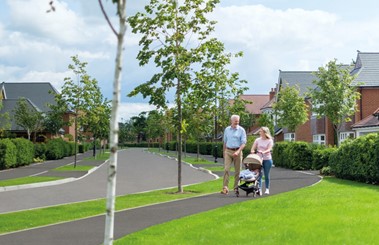
There are a number of ways that Hartford Grange has been ‘built to impress’ including the planting of mature trees along the main avenue to create a sense of arrival at the new community.
The kerb appeal of each and every property has been optimised through the planting of impressive hedges, garden trees and shrubs and a series of attractive green spaces including a new village green at the entrance have been provided.
The effect of all these measures is to provide a truly impressive setting for our homes and to engender a sense of pride in both the individual homes and the community as a whole.
Internal Design Guidance
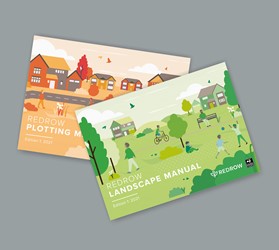
This year we have also launched two internal design manuals both rooted in the Redrow 8 principles but providing an additional layer of technical guidance and support to our design teams. One focuses on the layout of developments with a particular focus on how each home sits in the street to ensure we deliver our customers' expectations. The other manual focusses on landscaping to ensure we are consistently delivering beautiful streets, spaces and places as well as achieving biodiversity net gain and integrating robust green and blue infrastructure thoughtfully. Together, these manuals provide a very clear framework for the delivery of our vision for beautiful, sustainable and value-generating places.
With a renewed focus on placemaking and ‘beauty’ in the planning system and new requirements such as the provision of trees in every street, our clear and customer-focused approach to placemaking, backed-up with clear design guidance means that we are in a strong position to meet this new agenda. The new agenda also places an increased emphasis on listening to existing communities and we are well prepared to respond to this as one of our key principles is 'Listen to Learn'. This is a commitment to work collaboratively with local communities from an early stage in the design process.
Image: Redrow Internal Design Manuals
From extensive and recent independent polling we know that we have support from the home buying public and local councillors for our particular approach to delivering beautiful places to live and that what we offer is what people are looking for now more than ever. This public support will be useful as increasingly, under proposed changes to the planning system, we will have the opportunity to collaborate with local communities in delivering the types of places they would like to see developed in their communities. Using our commitments to collaborative design and consultation we are increasingly working with local people at an early stage in developing visions for new communities that will be well integrated with the existing place as well as deliver the homes and places that people want to live in.
Evolving our designs: listening to our customers
Redrow’s approach to placemaking is an important part of our commitment to customer-focused design. Following the Covid-19 pandemic and associated lockdowns we undertook a series of surveys to find out what prospective customers might be looking for in the future. In March this year we instructed a YouGov survey of 2,000 members of the public and 521 local councilors to understand what communities are looking for in a home, their street and neighbourhoods following the experience of the pandemic and the lockdowns.
The results were interesting and insightful showing a very strong preference for detached homes with more space internally and externally a key requirement. A two-storey home with parking side to side at the front was the most desirable type of home and detached homes were felt to be the easiest to adapt and the best for having a dedicated work space. In terms of charging an electric car most people (77%) would prefer to park their car on their own driveway and 92% said that a private driveway or garage would be useful.
Many of these preferences amongst the public were reflected in the views of locally elected councillors and most councillors felt that two-storey homes were more functional and better for family living than three-storey homes. Councillors felt that detached homes of a traditional design were most likely to have a positive impact on quality of life.
Key survey findings were:
The public survey:
- The results show a strong preference amongst the public for detached homes and homes with more space internally and externally;
- A two-storey detached home with parking side by side to the front is the more preferred arrangement;
- Detached homes are considered to be the easiest to adapt (93%);
- Detached homes with front gardens make the most attractive streets;
- 77% of people would prefer to charge their electric car on their driveway;
- 92% of people would find a private driveway or garage useful;
- A detached home is most likely to provide room for a dedicated work space; and
- 95% would find easy access to green spaces beneficial.
The councillor survey:
- 68% of councillors would prefer to see a mix of house types and densities across their local area;
- Councillors felt two-storey homes were more functional and better for family living than three-storey homes;
- 70% expressed a preference for parking side to side at the front of homes (just 22% for parking in courtyards to the rear);
- 77% of councillors felt that residents would prefer to charge their electric car on their driveway to the front of their home. Only 3% felt a communal charging point away from the home would be preferable; and
- Detached homes of a traditional design were voted the most likely to have a positive impact on quality of life and tranquillity.
We passionately believe in understanding our customers – how they live and their evolving needs, to ensure that we design and build homes that enhance their quality-of-life. Informed by customer feedback, we continue to review and update our house type range. Our design ethos creates the living space desired by our customers and enhances their health and wellbeing whilst standardising our production costs across the group. Working collaboratively with our supply-chain enhances our designs through the development of efficient, sustainable, maintenance free and cost effective products.
In response to the increase in home working resulting from the pandemic, our most popular house type designs have been updated to allow our customers the choice of an alternative layout - to provide a new home office complete with furniture. We also now offer the option to fit out one of the bedrooms as a home office complete with fitted office furniture, additional electrical sockets and an ethernet point.
Evolving Our Designs: Keeping Our Customers Safe
As part of the construction documentation for each of our house type designs, we carry out a Design Risk Assessment in order to identify any potential health and safety risks that could arise during their construction.
We aim to eliminate any risks completely, where this is not possible, control measures are put in place to mitigate them.
A new government focus on beauty and placemaking
Government has placed an increased emphasis on delivering high quality and beautiful places in the planning system and in July 2021 published revisions to the National Policy Planning Framework (NPPF) together with a National Model Design Code (NMDC) that together put beauty and placemaking at the heart of planning.
The NMDC sets out a framework for the delivery of responsive places that have local community support. We have contributed suggestions and recommendations to every stage of this emerging agenda and have consistently stressed the need for any guidance to be rooted in what people want from a home, a street and neighbourhood rather than attempting to impose a model design approach on people which is unlikely to succeed.
As this new design agenda has emerged over the last few years we have been preparing for it by putting in place robust frameworks for placemaking and landscaping that deliver what we know our customers want. Our approach aligns with many of the objectives and principles in the NMDC such as the delivery of tree-lined streets, incorporating nature and enhancing opportunities for walking and cycling. We have also set in place commitments for community collaboration and consultation which will become increasingly important in the future as we work to deliver new places with the support of local people. This will be given greater prominence as we move into the new financial year.
Improving and monitoring the quality of development layouts
Our Layout Review process has been in place for two years and is a valuable way of helping to ensure all of our developments genuinely create a better way to live. We have a formal review session with each division twice a year via an internal review panel including the Group Chief Executive, Regional Chief Executive, Group Communities Director, Group Technical Director as well as the Group Masterplanning Director. The formal reviews now take place virtually which is an effective and efficient way to collaborate, discuss and plan. Each year we review approximately 100 layouts using the internal review panel and all current layouts for all of the land we currently control has been the subject of at least one review. In this way the senior management team ensure we are optimising value generation as well as firmly delivering our commitments to placemaking and high quality design.
Each layout is assessed against the requirements set out in our Plotting and Landscape Manuals as well as our Redrow 8 principles. This ensures that they meet our layout efficiency, mix and average house size expectations as well as our requirements for placemaking, biodiversity, green and blue infrastructure and healthy low carbon travel options.
This year we held a number of workshops with our divisions and design teams across the country focusing on creating good layouts that deliver great places to live for our customers. Building on these workshops and the discussions on layouts in the layout review process we launched our new Plotting Manual in March of this year. This is a comprehensive document setting out detailed guidance and advice to colleagues on how to achieve well-structured and efficient layouts that are also attractive, meet the needs of our customers and really showcases Redrow to the best of our ability.
To complement the Plotting Manual we have employed award-winning lanscape architects Bradley Murphy Design to produce a comprehensive 160 page Landscape Manual in partnership with The Wildlife Trusts which is rooted in our design approach. This sets out technical advice and guidance for our design teams on all aspects of landscape design from creating biodiversity rich ponds to tree-lined streets and the planting in front gardens. The landscape manual provides a framework for the thoughtful integration of green and blue infrastructure and green travel options from the earliest stage in the design process. All of this is aligned with our commitment to creating thriving communities and delivering the biodiversity commitments in our Nature for People strategy. Having this manual means that a considered approach to landscaping is consistently taken at the very beginning of design and prevents the risk of it being considered as an afterthought.
We are always keen to continue to learn from our customers in terms of what makes a great place to live. We are developing a post occupancy review process to assess completed Redrow places (using our Redrow 8 scorecard and other methods) and to compare the results with what we set out to deliver at the start of the design process. This review process will ensure that we continue to deliver the types of places our customers want to live and that we can make any necessary adjustments to our design approach on future developments.
Land
Our land buying expertise, placemaking and design abilities and our strong balance sheet help Redrow secure quality land holdings in appropriate locations. During the financial year the Group acquired c8,300 plots with planning permission to add to our current (owned and contracted) land holdings. This was a significant increase on 2020 levels when land purchases were very limited in the second half in response to the COVID-19 pandemic. As a result, after 5,620 legal completions, we closed the year with c.29,500 plots in the current land holdings (2020: 27,000). This represents a c5.2 year land (2020. c6 years) supply based on legal completions in the financial year, securing a solid pipeline to deliver future thriving communities. Approximately 39% of our current land holdings are in the South, 28% in the Central Region, 23% in the North and 10% in London.
Forward land has again made a significant contribution to land additions delivering 43% of the c8,300 current land additions across 17 sites compared to 48% and 8 sites in the prior year. We closed the year with forward land holdings of 34,400 plots (2020: 30,700 plots).
Revenue, Legal Completions and Outlets
Revenue increased this year to £1.94bn (2020: £1.3bn), a 45% increase on last year which was significantly impacted by COVID-19. The sale of homes accounted for all but £37m of revenue which was attributable to land sales, notably the disposal of two London sites, which we announced last year we would not be building out (2020: £7m). Homes revenue increases came across all our geographical regions with the South performing particularly strongly.
Our Heritage Collection contributed 79% of the Group's private sales revenue (2020: 84%) with our bespoke product representing the remaining 21% (2020:16%).
We delivered 5,620 legal completions in 2021, a 39% increase on 2020 levels (2020: 4,032). Affordable homes represented 23% of legal completions and 11% of Homes revenue (2020: 23% and 10%).
Houses contributed 79% of our private legal completion volumes and 81% of private sales revenue, compared to 85% and 87% in 2020.
Average active outlets increased during the year to 117 (2020: 110). Due to the strong housing market and the time required to obtain implementable planning permissions, average active outlets are expected to reduce in FY2022 to 112. However, by FY2024 we expect our average active outlets to increase to 137, despite the scale down of our London operations. As a result of this, we expect our revenue in FY2024 to exceed £2.2bn, which will be a record for Redrow.
Delivering Our Nature for People Strategy
Key commitments
Following the launch of our Nature for People Strategy in July 2020, this year we have developed new processes and procedures to enable us to fulfil our 15 commitments shown in the table below.
Nature for People: Themes and Commitments
| NATURE GAINS | WILDER LIVES | FLOURISHING LEGACY |
| 1. Prior to purchasing land we will assess the wider potential impacts on high quality habitats in our decision making. | 8. The community will enjoy doorstep access to nature-rich green spaces throughout the development. | 13. We will choose orgainsations to manage our developments, who share our ambition to deliver a vibrant legacy for people and nature. |
| 2. We will design our developments to contribute to existing or potential Nature Recovery Networks. | 9. We will provide edible planting and opportunities for community food growing on our developments. | 14. We will set clear expectations and develop inclusive delivery plans which guarantee long-term gains for nature. |
| 3. We will retain, protect and enhance high quality habitats and compensate where losses are unavoidable. | 10. We will provide bird, bat or bug boxes and hedgehog highways to new homeowners and support them in creating wildlife friendly gardens. | 15. We will measure and share information about outcomes for nature, wellbeing and people. |
| 4. We intend to exceed government requirements for a 10% Biodiversity Net Gain (BNG) where possible. | 11. We will encourage community and stakeholder participation in the design of green spaces. | |
| 5. We will achieve Biodiversity Net Gains on-site, or as local as possible. | 12. We will create opportunities for the community to learn about local wildlife and participate in the care of green spaces. | |
| 6. Our developments will be inspired by the landscape character with locally relevant, species-rich planting and pollinator friendly areas. |
|
|
| 7. Green infrastructure on our developments will be multi-functional, benefitting nature and people. |
We have been focusing our efforts on ‘Nature Gains’, developing a new approach to land appraisal and site selection to ensure that we avoid negative impacts in any location and in particular those areas of high biodiversity value. This approach will also take into account the wider impacts on nature outside the site boundary, and help us to design all our developments to achieve a net gain for biodiversity.
Preparing for future legislation - Biodiversity Net Gain (BNG)
The forthcoming Environment Bill includes a requirement for developers to deliver a net gain in biodiversity – to have an overall positive impact on biodiversity post-development.
In preparation, we have undertaken pilot projects to assess how our current design approach and processes need to change. The results are largely positive for our design approach, with on-site net gains achievable on 63% of the test projects, with a further 25% of projects having potential to achieve gains on future phases of the development (subject to forthcoming detail in the regulations) and 12% of developments requiring offsets to achieve biodiversity net gain. In particular, it will be more challenging to achieve on smaller sites, which naturally have fewer opportunities to create habitats on site.
We will now be measuring biodiversity and the potential for a net-gain on all new land purchases. This will enable us to further develop our approach ahead of the legislation coming into force following the two year transition period.
During the year, we delivered biodiversity net gain training workshops for all Land, Planning and Technical teams, helping prepare them for achieving gains for nature on new developments. We are already retaining and enhancing habitats in line with the mitigation hierarchy, wherever possible on our developments. For example at Great Wisley Park, Haverhill we have retained and improved existing hedgerows to achieve an 18% net gain in these important habitats. At our Chaul End development, Caddington, we are managing the existing woodlands by thinning and coppicing the trees to improve conditions and to encourage a range of wildflower, bird and insect species. We have also improved footpaths to parts of the woodland to enable the local community to more easily access and enjoy the benefits of these nature-rich spaces.
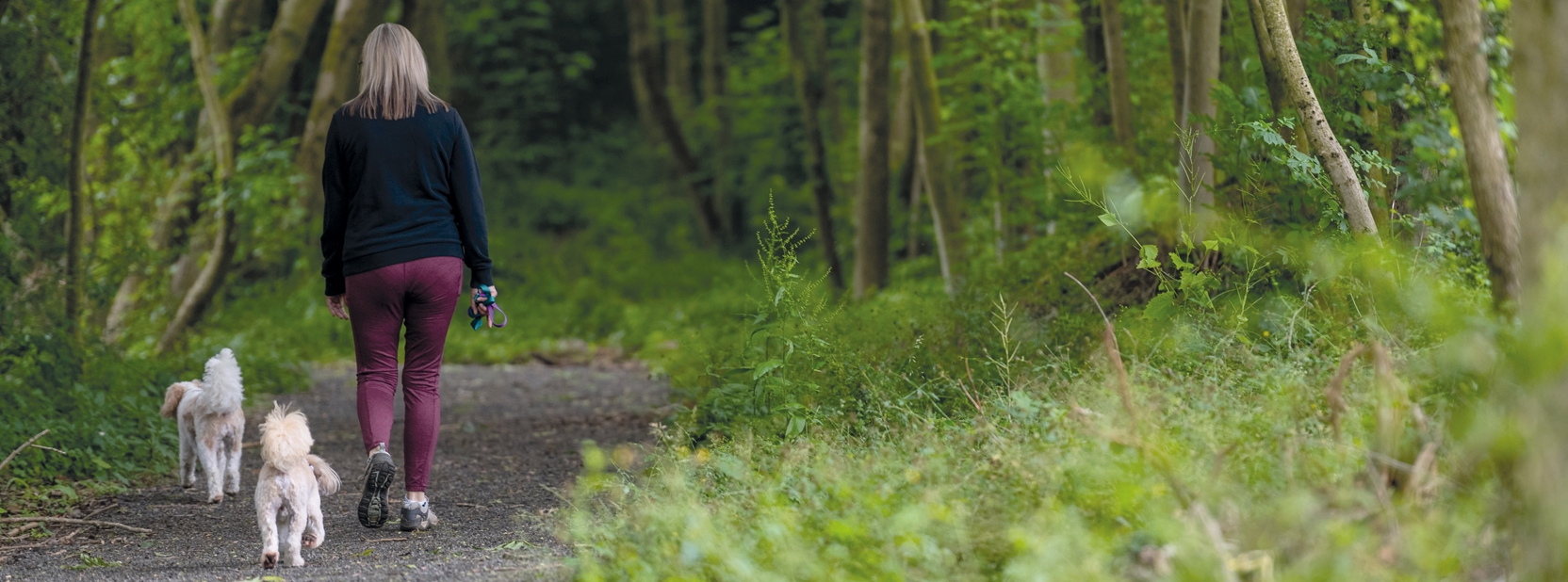
Continuing our Pioneering Partnership

Following two years of successful partnership with The Wildlife Trusts, during which time we co-developed and launched the Nature for People Strategy, we are now focused on embedding our strategy across the business. This phase of our relationship will ensure the 15 commitments we have made are effectively implemented, the right assurance processes are in place, and the benefits of our actions, for both wildlife and people, are measured and reported. We are also recruiting a full-time ecologist to support delivery of the strategy and to ensure our developments are designed with nature in mind.
A key focus of our Partnership is to develop closer relationships between the 47 local Wildlife Trusts and our Redrow divisions. We will benefit from local ecological expertise at the earliest possible stage in the development process to ensure the best outcomes for local people and nature. Closer relationships and collaboration will also support a more open and honest dialogue between the two organisations. This will help minimise any conflicting viewpoints and enable innovative solutions to be reached.
Nitrate and Phosphate Discharges from new developments
Concerns over pollution of rivers, lakes, estuaries and coastal sites from excess nitrates and phosphates has been delaying planning permissions for new housing developments in some parts of the country. There is evidence that these high nutrient levels are causing problems at some designated conservation sites resulting in negative impacts on conservation objectives. Research is underway to establish to what extent new developments may add to the existing problems. Meanwhile, developments in these sensitive areas are increasingly being required to undertake a nutrient assessment and to show that they are achieving ‘nutrient neutrality’ to mitigate any potential effects.
Throughout the year, we have been working to find ways to achieve nutrient neutrality on developments where Waste Water Treatment Works are unable to adequately treat sewage for release to sensitive rivers and estuaries. Our homes are already industry-leading in terms of water use, designed to a standard of 105 litres-per-person-per-day. However, additional solutions are required on our developments to ensure nutrient neutrality and to unlock planning. We have a Working Party in place to share best practice across our divisions. Furthermore, we are working with government and industry to explore solutions to these challenges.

Working with local wildlife organisations is vital to ensure our Nature for People biodiversity strategy can be delivered at grassroots level.
Our South East division is already demonstrating its potential, having forged strong relationships with the consultancy arm of Kent Wildlife Trust, KWT Consultancy Services, whose profits are returned to conservation work in Kent.
During the year, we have worked together to benefit from their expertise across a number of our developments:
- Advice on enhancing water vole habitats at Britannia Road, on the Hoo Peninsula
- Assessing ecological reports for Knells Farm, Tunbridge Wells (plans include c500 homes, woodland and a new orchard) close to a neighbouring Area of Outstanding Natural Beauty and important watercourse
- Designs to enhance the ecological value of our Hoplands site in Hersden, near Stodmarsh Nature Reserve
- Specialist aquatic planting report for a site of c400 homes at Cockering Road, Thanington
Redrow South East planning director David Banfield says: “At Knells Farm, for example, there are numerous biodiversity challenges. We’ve walked the site with KWT Consultancy Services and our ecologist and are adapting our eco submission (part of the Environmental Impact Assessment) based on their feedback.”
The consultancy’s work is completely separate to that of Kent Wildlife Trust as a statutory consultee for planning applications.
* 73% of all legal completions (private and affordable) in FY2021 were houses
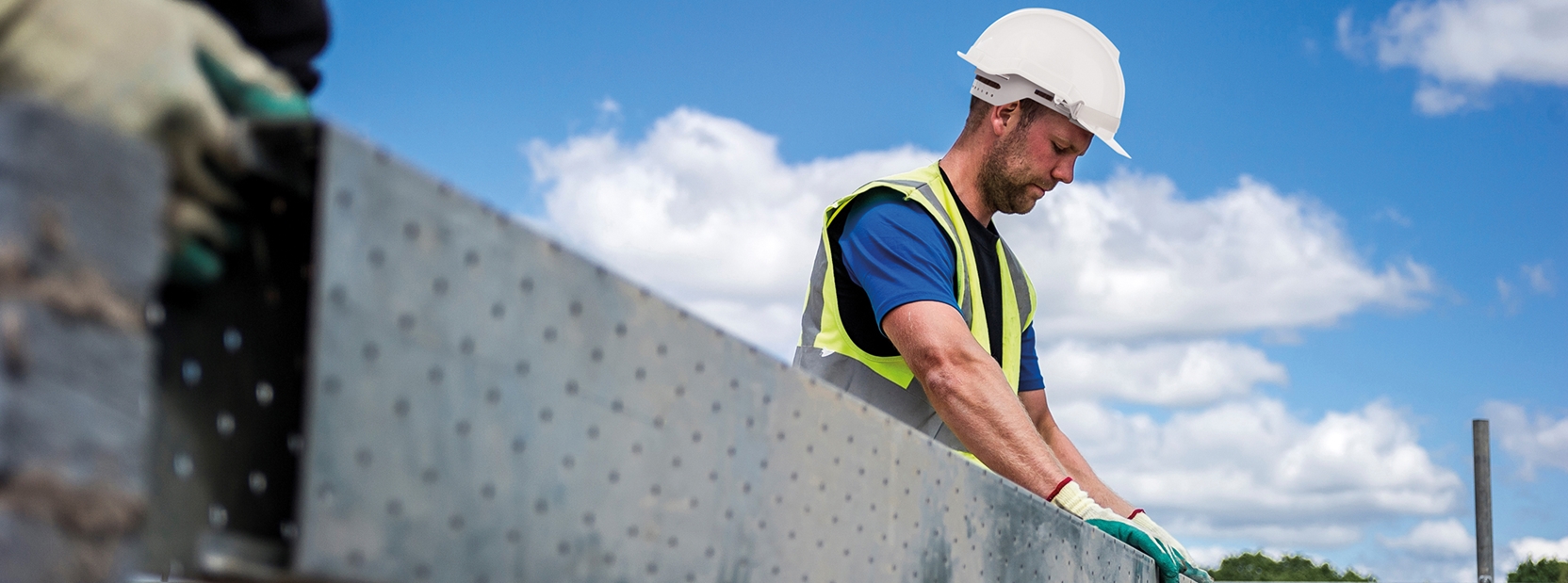
Quality of Build
Considerate Constructors Scheme (CCS)
A key element of building responsibly is ensuring that our construction sites are managed in a way that seeks to improve the image of construction by striving to promote and achieve best practice in the following areas;
- Care about appearance;
- Respect the community;
- Protect the environment;
- Care about safety; and
- Value their workforce.
As a contractor partner of the CCS, we have committed to registering all of our developments with the scheme. This means that regular visits are undertaken by a monitor from the CCS to determine if our sites are meeting the Scheme’s Code of Considerate Practice.
We ended the financial year with all of our sites registered and this is monitored monthly and reported to the Executive Board to ensure 100% registrations are maintained.
207 CCS monitoring visits were carried out during the financial year with the average score being 36.67 (out of 50). This was an improvement on the prior year when 94 monitoring visits were carried out with an average score of 35.09.
NHBC Construction Quality Review (CQR) and Reportable Items (RI)
The NHBC offer a CQR on approximately 80% of registered sites each year to assess the build quality outside of the key build stages. This provides an opportunity to perform a deeper investigation in to the root causes for good and poor quality on sites. Each build stage available for inspection during the CQR is scored from 1-6 with an average score calculated along with a percentage score (based on how many scoring lines achieve a 4, 5 or 6). During the financial year the NHBC undertook 74 CQRs (2020: 110) with an average score of 4.36 (out of 6). This was an improvement on the 4.13 scored in the previous financial year 85% of build stages were rated good (a score of 4) to outstanding (a score of 6). This was also an improvement on the 80.3% achieved in financial year 2020. During the year we increased our target percentage from 75% to 80% and it is pleasing to have exceeded this target as we continuously strive to improve quality through the dedicated focus of our teams and the Executive Board.
The NHBC can record any contravention of the NHBC technical standards or building regulations at all of the key build stages or at frequency visits as a reportable item (RI). For financial year 2021 our average RI score was 0.22, based on 34,879 inspections. This compares to an average of 0.23 for our NHBC Benchmark Group 1 but is higher than our 0.15 target. This remains a high priority focus area for the coming financial year to try and drive down the number of RIs we receive. We will be undertaking more root cause analysis to assist with this.
The table below shows average reportable items and CQR percentage and average scores.
| Build Quality | FY2021 | H1 2021 | FY2020 | H1 2020 |
| Average reportable items per inspection | 0.22 | 0.21 | 0.20 | 0.19 |
| Construction Quality Review - % | 85.0% | 84.0% | 80.3% | 78.7% |
| Construction Quality Review - average score out of 6 | 4.36 | 4.00 | 4.13 | 4.09 |
Zero defects
Zero defects in our homes is an important aspiration. In September 2020, we introduced formal reporting on the percentage of our homes legally completed with zero defects outstanding. Results from September 2020 to the end of the financial year showed that 95% of our private homes were completed and handed over to our customers with zero defects. We have also implemented a similar system for our affordable homes so that all customers can enjoy the high quality we strive to deliver.
NHBC Pride in the Job Awards 2021
The NHBC Pride in the Job Awards recognise excellence in on-site management. From over 11,000 eligible site managers nationwide, only 431 have been awarded a first round quality award with 24 of those being Redrow site managers.
These 24 quality award winners will be presented with their awards at ceremonies later this year and will continue on to the next stages of the competition, trying to secure a seal of excellence, regional or national award.
The 2020 NHBC Pride in the Job Awards continued between September 2020 and January 2021 with four Redrow site managers achieving a seal of excellence award. This was out of the 21 first round quality award winners reported on previously.
Technology supporting build quality
Financial year 2021 has seen our Red Site Manager Inspection (SMI) app become a fully integrated part of our site managers' on-site quality inspections. The app has been extended to include inspections for apartments from internal works onwards and further development on the apartment inspections is planned for 2022 along with development of the subcontractor portal app to aid our subcontractors resolve quality incidents raised.
At the end of the financial year 2021, 96.23% of the quality inspections required had been carried out which is just over 37,000 individual inspections.
In July 2020, Redrow released a brand new app, Red Site Sign In, to our sites (excluding London) that enables the electronic signing in and out of sites. This allows efficient and accurate collection of data on labour numbers on our sites and significantly aids with HS&E matters such as live site registers and information for accident reporting. This app has already been further enhanced making the process easier and more user friendly for our staff, subcontractors and visitors to use. Further development is planned to include other key aspects of the HS&E management systems such as inductions so we can ensure HS&E remains at the heart of what we do.
Standard Modular compound
Our construction site compounds generally comprise site offices, welfare facilities, storage and waste management areas and have not changed, other than to support our COVID-19 safety measures for a number of years. In a drive to improve the working conditions of our site colleagues, encourage collaborative working between departments, increase the energy efficiency of the facilities, and improve standardisation of these areas across our operating divisions, we are trialling on one site a completely new modular compound design.
New features of this new compound include furniture consistent with our divisional offices and Customer Experience Suites, collaborative hot desking for the wider project team, a Continual Personal Development (CPD) station specifically for use by our site operatives, apprentices and forklift drivers, improved drying room facilities for our subcontractors, showers and added extras such as air conditioning, USB points and a dedicated space for prayer and reflection. The building itself is B+ rated, comprising of improved thermal insulation, double glazed windows with low u-values, energy efficient LED lights with PIR activation, energy efficient heaters with thermal cut-out and timers and energy efficient point-of-use hot taps. The cabins also improve comfort levels for our site staff.
In conjunction with this we are also trialling a solar powered generator to power the facilities, Hydrotreated Vegetable Oil (HVO) fuel to run the plant and machinery, solar powered external lighting and improved, well sign posted recycling waste facilities for the compound.
If the trial is successful, we plan to roll this out across the rest of the business in the next financial year.
PPE and Construction uniform rebrand and refresh
In conjunction with a rebrand of our PPE and construction uniforms, we have taken the opportunity to undertake a comprehensive review of our PPE and construction uniform to ensure that these met the requirements and wants of all our employees whilst conforming to HS&E standards.
A working party comprising site managers, assistant site managers, graduates, apprentice co-ordinators, construction directors and colleagues from HS&E and commercial was set up. They produced a list of improvement suggestions and we have been working closely with our suppliers to incorporate these improvements. This will ensure we can offer suitable PPE and uniform for different body types, genders and style choices. A refreshed brochure will be produced in the new financial year, which will enable all of our construction teams, or those personnel who require PPE to view what is on offer along with sizing guides and useful information on the products. This will allow our construction teams to wear what they feel comfortable in whilst still looking professional in their customer-facing role and remaining safe.
HEALTH, SAFETY & ENVIRONMENT
Health, Safety & Environment - “Because It Matters”
Redrow does not see Health, Safety & Environmental (HS&E) management as an addition to our duties but rather as an integral part of our overall duty. As such, we strive to ensure good HS&E management is just part of what we do. We seek to achieve the highest HS&E standards and aspire to become the industry/sector leader in HS&E performance. We do not pursue this aim simply to comply with legislation; we do it to protect our people and the environment from harm. Both the Main Board and Executive Board review our HS&E performance at every Board Meeting as the first substantive agenda item.
Redrow is in constant pursuit of continuous improvement of its overall HS&E performance across the Group and seeks to manage the inherent HS&E risks associated with all of our activities. We do this by the consistent application of our HS&E Management System and supporting our subcontractors with the effective planning, managing, monitoring and co-ordinating of the activities they undertake on our behalf.
We are pleased to report that we have seen a positive trend in our overall HS&E performance in the year. As in the previous year, there were no fatalities to either our directly employed or subcontractor colleagues. The Group Accident Incident Rate by Site reduced to 0.26, compared to 0.38 in the previous financial year and our target of 0.3 or below.
HS&E Assurance Inspections are carried out across the Group by our HS&E Department, to ensure and monitor compliance with our internal HS&E standards on our sites. The Group average for compliance found in these HS&E Assurance Inspections increased to 90%, compared with 87% last year.
Review of HS&E Activities in financial year 2021
Engagement with our Employees is an important part of our role.
Feedback from our annual internal ‘Insight Survey’ is positive from our employee colleagues regarding our overall approach to HS&E:
- 88% feel that as a company Redrow cares about health and safety;
- 82% feel that as a company Redrow cares about personal health and wellbeing; and
- 91% believe Redrow takes our environmental responsibilities seriously.
Our internal Engagement Team have provided regular ‘wellbeing’ related information and updates on our internal intranet to support both our employee and subcontractor colleagues with both their physical and mental health. We also have a network of ‘Wellbeing Champions’ and Mental Health First Aiders to support our colleagues across the Group.
In addition we also have and maintain a Drug & Alcohol testing regime for post-accident and ‘for cause’ testing across all of our construction based activities.
In financial year 2020 we introduced four HS&E specific strategic pillars and continue to use these to shape our approach:
- Governance;
- Leadership;
- Ownership; and
- Workplaces.
This is outlined in the table on page 42.
| Governance | Leadership | Ownership | Workplaces |
| HS&E Leadership meetings provide a strategic platform for the review of all existing and emerging HS&E risks. It is our aim to achieve sector-leading HS&E performance. | We’ve seen an increase in the use of our site unsafe/stop notices. These are issued by our individual Site Management Teams when work activities undertaken by our contractors have not met our HS&E standards. |
We have focused on embedding these elements to all of our work areas e.g. · Offices, · Sites, · Sales, and · Customer Services As a result the number of serious (RIDDOR Reportable) injuries occurring across the Group significantly reduced from 42 down to 30, a reduction of 29%. |
|
|
Group HS&E Leadership Meeting – held twice a year and attended by; · Group Chief Executive, Group Company Secretary, Group HR Director, Regional Chief Executives and the Group HS&E Director. |
|||
|
Regional HS&E Leadership Meetings - held quarterly and attended by; · Regional Chief Executives, Divisional MD’s and Group HS&E Director. |
|||
|
Divisional HS&E Leadership Meetings – held monthly and attended by; · Divisional MD, Divisional Directors and Divisional HS&E Manager. |
|||
This year we have continued to provide HS&E training for all of our operational roles from Senior Executives through to Apprentices to ensure everyone has the appropriate HS&E training and skills required for their role. A total of 1,935 employee colleagues received HS&E training in the year.
In conjunction with this, we re-structured our internal HS&E Department to provide better support and assurance to our Divisions. We also strengthened our internal HS&E governance resource, which has allowed us to conduct more internal HS&E Audits and make continuous improvements to the HS&E Management System.
We have a requirement that all contractors must be SMAS accredited, which is a Safety Scheme in Procurement accreditation that ensures all our contractors have been assessed for their health and safety competence. This demonstrates that each contractor we employ has the appropriate skills, knowledge, attitude, training and experience to work safely on any of our developments. Every contractor must attend a site specific HS&E Induction before commencing work on any of our sites and they must comply with our Contractors HS&E Rules as a condition of their contract.
Protecting the Environment
Our Environmental Management System (EMS) is accredited to ISO 14001 and covers operational activities. The application of our EMS helps prevent pollution and minimise disturbance to local community from noise and dust as well as helping to protect local biodiversity.
We are pleased to confirm there were no fines or prosecutions in relation to environmental matters in the year.
As mentioned earlier, through our membership of the CCS we are provided with an independent assessment of our approach to protecting and enhancing the local environment on the developments in which we are building. During the year we achieved an average score of seven out of nine with regards to our environmental protection.
Future Focus
This year we introduced a new electronic HS&E incident reporting and auditing system to improve our ability to report incidents and enable better analysis of root-cause. We intend to expand the capabilities of this operating platform to allow management teams to have self-service access to reports which will allow for more agile responses to learning outcomes and ultimately improved HS&E performance across the Group.
We will continue to regularly update our HS&E Management System to ensure it is maintained in line with industry best practice and HS&E regulatory requirements.
We will also continue to support the work undertaken by the Home Builders Federation Health and Safety Committee, in order to further promote the collective improvement across the House Building Sector.
For the new financial year we will be adopting a new HS&E Strategy to support the continued improvement of our overall HS&E performance.
- Safe to Build
- completed and maintained Design Risk Assessments for all Group Standard Designs; and
- every new development to have a completed and maintained Pollution Prevention Plan.
- Operating Responsibly
- year on year reduction in the number of reportable accidents; and
- all Divisions to achieve internal HS&E Assurance Inspection benchmark rate over 12 month period.
Putting Our Customers First
Transforming the Customer Journey
Redrow has maximised its human capital across the whole customer journey, nurturing lifelong relationships with Redrow home owners, which are positive and profitable. All this has been achieved whilst effectively adapting to the customer trends and challenges associated with Covid-19. During the financial year 2021, our customer and marketing team set out and delivered an exciting new digital and marketing strategy.

The combined Sales, Marketing, Customer Service and Communications functions, who operate as a single team within Customer & Marketing, collaborated on a major refresh of the Redrow brand. A new Brand Portal was launched to support the brand refresh which provides a single source for images, videos and other brand related assets. It also enables divisions to ‘self-service’ the creation of their own brand artwork, improving efficiency and ensuring brand consistency. For more complicated briefs, with specific creative requirements, online requests can be submitted and tracked online until completion by Redrow’s dedicated design team: Red Studio.
In tandem, the team also began to review customer experience within its sales arenas. These were re-imagined as ‘Customer Experience Suites’ and transformed into areas customers can visit throughout their journey with Redrow.
Redrow is believed to be the first housebuilder to remove paper from sales centres, combining the knowledge and expertise of its sales consultants with industry-leading technology. Although this project commenced before the Covid-19 pandemic, the changing trends in home ownership that have taken place since the pandemic fit perfectly with Redrow’s Heritage product and better way to live philosophy. The new brand capitalises on this by focusing on its ‘a better way to live’ purpose, with homes that are better by design, with better places and better experiences for customers.
Image: The new Redrow branding
The new Customer Experience Suites transform interaction with customers, right from their first visit to the site, all the way through to post-completion. Key features of the new suites include digital welcome banners, which can personalise messaging for individual customers depending on appointment type, and digital screens throughout, all of which can be updated remotely to ensure consistent messaging across all outlets. There are also interactive site plans and iPads, where customers can view choices and upgrades, and even complete their reservation online.
Initially, two test Customer Experience suites were launched at De Clare Gardens, South Wales and Foxbridge Manor, East Midlands in October 2020 and February 2021 respectively as part of a pilot project. Following their success, 14 new Customer Experience Suites were then rolled out during the 2021 financial year and all new outlets going forward will reflect the new model.
Key features of the updated customer and marketing strategy include:
- Digital-first approach to the Customer Experience Suites, including interactive screens and site-plans, supporting the paperless sales environment;
- Dedicated spaces for existing customers to meet with their customer service contacts;
- A new Redrow logo and geometric pattern, inspired by the Arts & Crafts movement, helping to create a cleaner and simpler look; and
- Redrow’s ‘a better way to live’ brand purpose is at the forefront of all marketing materials, to build a strong, consistent tone of voice that resonates with customers.
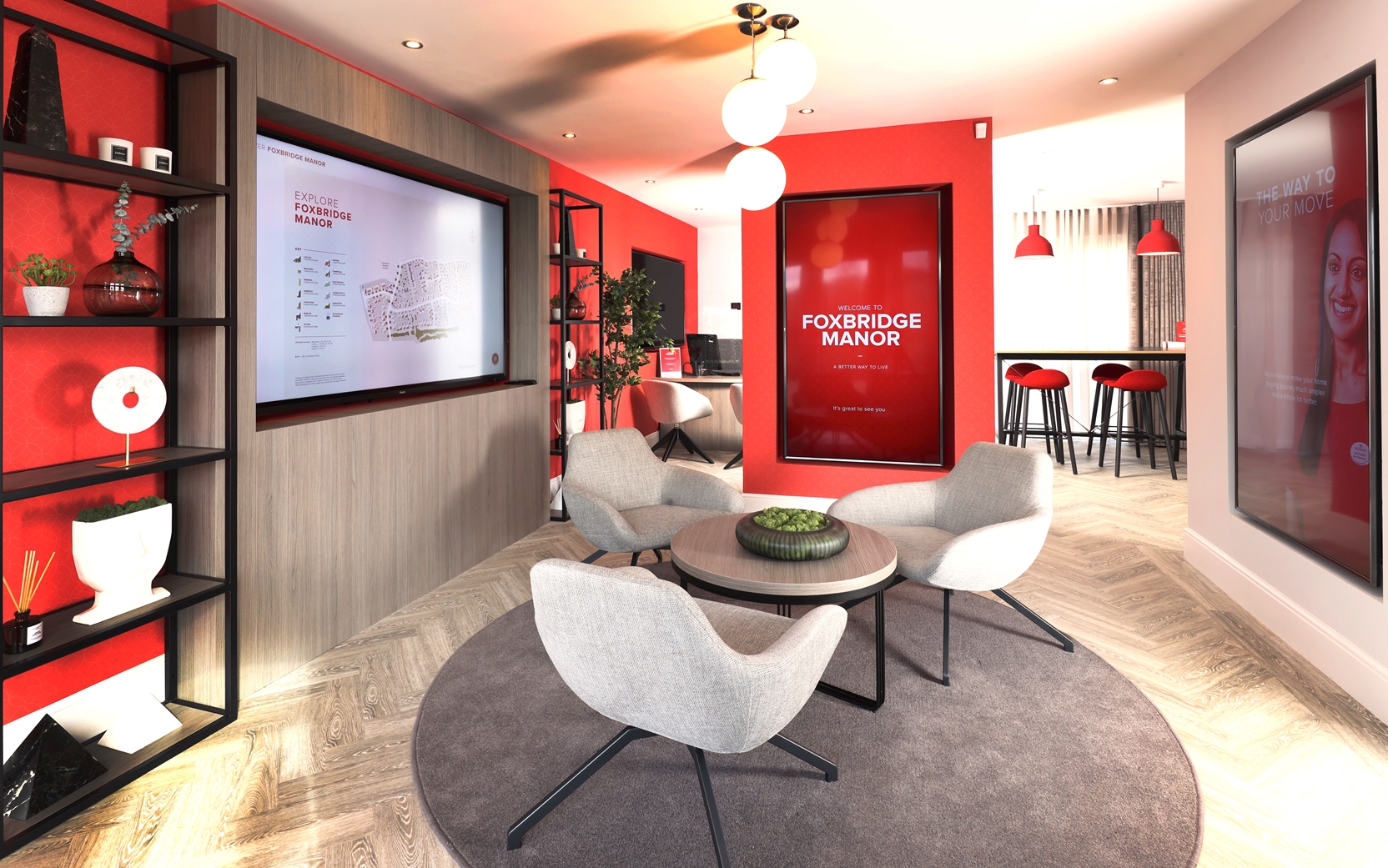
Connecting Face to Face and via Digital Experiences
Redrow now offers a Homeowner Support Portal enabling customers to submit any two-year warranty claims online. Any submissions are then integrated directly into Redrow’s systems, ensuring a seamless and efficient flow of information. Customers can also submit pictures and they receive a unique reference number enabling them to track the progress of their issue online.
Redrow’s systems are developed inhouse which delivers significant value in terms of integrating different platforms; working towards a single view of the customer and generating efficiencies within the business. Often issues can be resolved by homeowners themselves, and there are over 50 ‘how to’ videos on the Portal, which have been created based on the most common queries. The Homeowner Support Portal is part of the My Redrow platform where customers can also reserve their house online and purchase options and extras. Going forward, My Redrow will be the communications hub at every stage of the customer journey. This approach is a key part of Customer & Marketing strategies to connect the best possible face to face and digital experiences across the entire customer journey.
Listening to our Customers
Redrow carefully listens to customers across all channels, whether they are existing, or potential homeowners. To underpin our commitment to creating a better way to live, particularly in a post-pandemic world, we are closely monitoring consumer trends around what people want from their home and community, in order to respond accordingly. As mentioned earlier on pages 34 to 35, Redrow commissioned an extensive independent online survey via YouGov which polled over 2,000 British adults to provide insight into consumer home design and architecture preferences, neighbourly relations, and aspirations for their local areas. From the research it was clear that the majority of consumers (77%) aspire to live in a two-storey detached home, with just 3% and 4% of Britons stating a preference for a terraced home or townhouse. Having a private driveway or garage is important to 92% of Britons, whilst 70% of respondents believe it is important to personally know their neighbours.
This extensive desk research was also supported by a series of customer focus groups, held this year via zoom because of Covid-19 restrictions at the time, with key outputs shared amongst colleagues. These comprehensive steps are in addition to Redrow reviewing and analysing thousands of homeowner NHBC surveys every year. In addition to the core ‘would you recommend to a friend’ question, the surveys give our customers the opportunity to feedback on a number of aspects of their new home and place. Redrow has once again secured an NHBC Five Star award and is the top rated volume housebuilder on Trustpilot with an ‘excellent’ rating, and over 2,000 customer reviews. Colleagues across the business are engaged in the process and are often positively name-checked in reviews, whether it be across sales, build or customer service.
Redrow has developed an online reputation army of hundreds of colleagues across the business. This collaboration and return on human capital continues to drive significant benefits for Redrow.
Redrow has extended the proactive management of its online reputation and customer listening to include Google Reviews. Our customers are proactively asked to leave a Google Review and colleagues are empowered to respond to any reviews relating to their particular outlet. This approach gives development teams personal ownership over the reputation of their own development. They can also quickly update opening hours and contact information as and when required. Colleagues have already responded to over 2,600 (93% of) Google reviews within the year under review.
Helping to Deliver Quality Homes
A quality philosophy runs through all of Redrow’s operations. The fact that Sales and Customer Service colleagues are ultimately part of the same Customer & Marketing team, working closely with Build colleagues, plays an important role in delivering defect free homes.
In January 2021, Redrow held its first combined Customer Conference, encompassing colleagues from Sales, Build and Customer Service. The Conference was held virtually and presented from a specialist TV studio. Around 500 colleagues logged on remotely for the day event and evening awards, with Matthew Pratt, Group Chief Executive and Barbara Richmond, Group Finance Director amongst the key speakers. The key focus of the conference was around raising our quality standards across the board.
Responsible Marketing
Responsible Marketing at Redrow is about building trust with our customers and embracing the core ‘better way to live’ purpose. The Customer & Marketing team works collaboratively with colleagues in Legal, IT & Compliance and Sustainability to help ensure all aspects of the team’s performance deliver on this goal.
The Customer & Marketing team plays an active role in Redrow’s GDPR Committee, which monitors and reviews Redrow’s adherence to legislation and best practice surrounding customer data. Redrow’s in house training team plays a key role in delivering a combination of online, virtual and face to face training across the business on the subject of customer data. The GDPR Committee also helps to raise the importance of sound data protection practices across the wider business.
The Customer & Marketing team also support important internal communication initiatives e.g helping to develop and communicate business strategy. The three themes – Building Responsibly, Valuing People and Thriving Communities – help to bring to life our business and sustainability strategy in a very simple way for colleagues, customers and other key stakeholders.
Reservations and Order Book
The Group secured £1.75bn of private reservations in the year (2020: £1.6bn). We ended the financial year with a private order book of £1.2bn (2020: £1.1bn) of which 89% is forecast to translate into legal completions in financial year 2022 and 11% in financial year 2023. Our total order book closed at £1.4bn (2020: £1.4bn).
Environmental Stewardship
Climate change, together with biodiversity loss, are the most urgent environmental issues faced by communities, businesses and governments across the world.
- Read about our approach to biodiversity on pages 37 to 39 and 158.
For the housebuilding and construction sector, changes in climate have the potential to significantly impact our operations through interruptions to the supply of materials and in the way we design and build homes. Our business will be affected by both the physical impacts of climate change and the impacts associated with the transition to a low carbon economy, and ultimately to Net Zero Carbon by 2050.
This year we reviewed our Climate Change strategy and with our climate advisors, we are in the process of updating and strengthening our approach. Whilst there are significant risks, we believe there is also a great opportunity to learn from the science, to innovate, and to future-proof our homes and the communities that we build.
Our strategy looks at two key elements of climate change – carbon reduction and adapting to a changing climate, identifying both the risks and the opportunities. Our approach will integrate climate, biodiversity and people, recognising the interplay between them with a goal to minimise risk and deliver benefits for all.
Our Commitment to Achieving Net Zero Carbon
The UK government has set a target for the UK to achieve Net Zero Carbon by 2050. Whilst this presents a significant challenge, it is our aim to thrive in the transition to becoming a net zero business through collaboration with both new and existing partners.

At the point of publication, we have committed to sign-up to the Business Ambition for 1.5°C and to reach science-based net zero emissions no later than 2050. In making this commitment, we are demonstrating the highest level of ambition in the short and long term.
We will set interim science-based targets across scopes 1, 2 and 3, in line with the criteria and recommendations of the Science Based Targets Initiative. In doing this we also join the UNFCCC Race to Zero.
To support the transformational change that the UK’s net zero target requires we will advocate for ambitious government policies that align to 1.5°C.
Our Carbon Footprint
We continue to try and minimise the resources we use, reduce energy consumption and cut carbon emissions across the business.
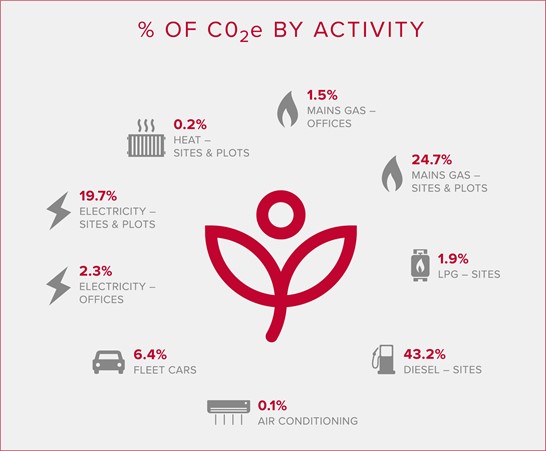
Since 2017, our greenhouse gas emissions have been decreasing. However, in 2020 we made a significant change in the way we collect the site and office gas and electricity data (which currently accounts for almost half of our emissions). The quality and accuracy of the data has been greatly improved and, combined with temporary site closures and a reduction in the number of homes built in 2020 due to COVID-19, the normalised emissions in 2020 showed an increase.
In the last year, we have seen a decrease in overall emissions of 5%, and a reduction in normalised emissions (tonnes CO2e/100m2 build of 6%).
Total Emissions by Activity %
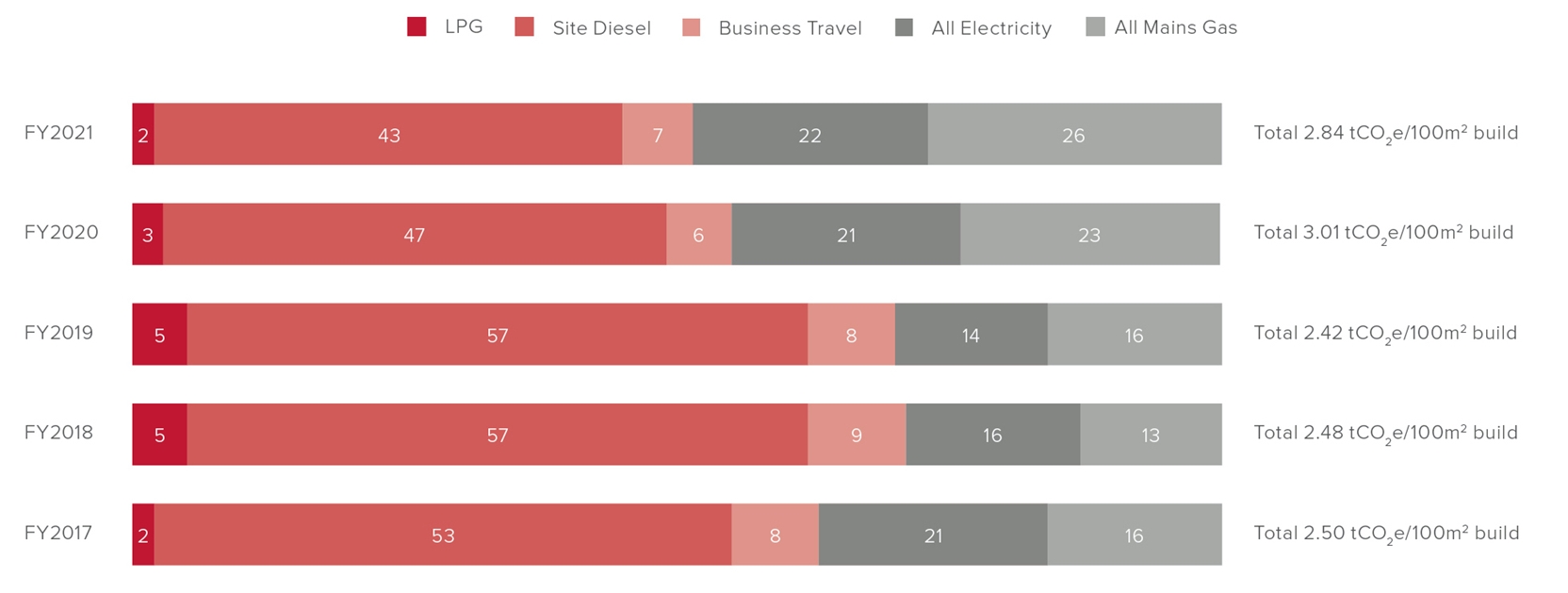
REDUCING OUR CARBON IMPACT
During the year we have achieved a reduction in emissions across many of our direct and indirect activities. These are disclosed in the following pages. In the coming months we will establish baseline emissions for our most material indirect scope 3 activities.
Reducing our Carbon Footprint: Our Operations
We have seen emissions reductions in the following activities in the year:
| Activity | Reduction |
| Site Diesel | 14% |
| Site LPG | 28% |
| Office Gas | 30% |
| Office Electricity | 23% |
| Air Conditioning | 17% |
| Business Travel | 1% |
Our Offices
In February, we switched to a renewable electricity contract for all of our offices. During the reporting year, 3.3% of electricity (offices and sites) was from a renewable source. The contract will be reviewed annually to ensure it provides the most cost-effective and least carbon-intensive solution as the renewables market evolves.
Our Sites and Customer Experience Suites
From July 2021, all plots, show homes and site compounds will be supplied by 100% Green certificated electricity. This is backed by the Renewable Energy Guarantees of Origin (REGO) certificates - these act as a guarantee that the energy was produced from renewable sources.
During the year, our Yorkshire division trialled a hybrid generator system with solar PV and a smart energy management system. This system can result in fuel savings of between 33% and 50%, with the accompanying emission reductions, helping us to achieve our targets and reduce costs. It also reduces noise disturbance due to the reduced time the generator needs to operate. Savings in carbon during a three month trial were estimated at 7,902kg. We will continue to trial alternative systems to identify the best solution for wider roll out.
We are also exploring a company-wide roll out of energy-efficient site cabins. These will provide improved thermal insulation, double glazed windows with low u-values, energy efficient LED lights with PIR activation, energy efficient heaters with thermal cut out and energy efficient point-of-use hot taps. The cabins would also improve comfort levels for our site-based employees and contractors throughout the seasons.
With our supply partners, two trials are underway to explore the efficacy of Hydrotreated Vegetable Oil (HVO), a biodegradable non-toxic fuel that is produced from vegetable fats and oils. This could provide an alternative to diesel which is currently used in generators and other construction machinery. HVO can reduce carbon emissions by up to 90%. It also reduces particulate matter and Nitrogen Oxides which have a negative effect on air-quality.
As part of our effort to reduce the energy use of Customer Experience Suites and show homes, we have installed a ‘one-switch’ shutdown system for all of the lighting at our Newton Garden Village development. We continue to monitor the impact on consumption and cost with a view to a wider rollout.
Travel
We have strengthened our commitment to reducing the carbon impact from our company car fleet and embraced the increase of Pure Electric vehicles into the market. Employees are increasingly opting for vehicles with a lower environmental impact - 73% of company cars ordered during the year were either Hybrid or Pure Electric. The current car choice is now 54% Pure EV, with options in all of our grades, and 34% Hybrid, with only a very limited amount with a purely petrol or diesel option.
To support this change we have installed charging stations at all of our divisional offices and enabled our employees to access preferential rates for installation of homes chargers.
We continue to offer employees the benefit of the Cycle to Work scheme, however the uptake has been low only with 2% of employees in the scheme at the end of the financial year.
Water Use: Our Operations
In 2017, we set a target to reduce the water intensity of our construction and office operations (m3/100m2 build) by 5% by the end of FY2022. In the last year, we have seen water use increase by 79%. This is an increase of 35% over the 2017 baseline.
As with our office and site energy data, in partnership with a new utilities management company, we have made improvements to the way we collect our water consumption data. In previous years, a large proportion of the readings were manually taken and many were estimated. The data collection is now automated and therefore much more accurate. It is disappointing to report such an increase however, this is not an increase in real-terms, and the high quality data we are now collecting will allow us to manage and measure our consumption more effectively.
Reducing our Carbon Footprint: Our Homes
From 2025, new homes built to the Future Homes Standard are required to have carbon emissions at least 75% lower than those being built to current Building Regulations standards. The forthcoming changes to Part L of the Building Regulations are due to be implemented in June 2022. They are intended to deliver a meaningful reduction in carbon emissions and to provide a stepping stone to the Future Homes Standard.
Although the Government has stated its intent to implement a 31% reduction in carbon levels over current Part L standards in June 2022, some aspects of the regulations remain unclear, namely the implementation of the Fabric Energy Efficiency Standard (FEES). The Government’s preferred option is to provide a meaningful uplift in the building fabric, and the level of FEES was consulted on earlier this year. To mitigate the uncertainty we are assessing multiple avenues for our future building specification in response to the various possible directions of the legislation.
The two common approaches to compliance at this stage are either to continue using gas boilers and offsetting the emissions using PV panels, or to use air source heat pumps to provide heating and hot water. Both approaches come with their own risks and opportunities.
The Government is anticipating large scale uptake of air source heat pumps but recognises that they are not yet established as a mass market solution for providing low carbon heating. The skills and supply chains for heat pumps require further support and expansion in order to meet the demand that will be created by introducing the Future Homes Standard. We have some concerns about the noise and vibration created by the heat pumps and the effect on internal and external layouts. We are collaborating with several major heat pump manufacturers to assess the practical and design implications of incorporating them, and to better understand the impact for future customers.
Water Use: Our Homes
Conserving water is an issue of increasing importance; research shows that we are likely to face significant water shortages within the next two decades as the population grows, urbanisation continues and the climate continues to warm.
Our homes are already industry-leading in terms of water efficiency with a rating of just 105 litres per person per day - well below the building regulation requirement of 125 l/p/d. This is achieved with highly efficient fixtures, water saving baths and flow restrictors.
We continue to provide guidance for our customers on how to use less water in the home and garden. In the year, 6% of completed homes were installed with a water butt.
PRODUCT INNOVATION
At Redrow we are continuously looking to improve and innovate to better meet our customers requirements and aspirations.
Building Envelope
Tackling climate change and simultaneously reducing our customer’s energy bills are key considerations in the way we design our homes. Our design process focuses on the right layout, materials and products to retain heat within the home. This is achieved through greater insulation levels, high specification doors and windows, efficient boilers and focus on achieving increased air tightness. Our approach requires that our homes improve air tightness by 50% over and above the regulatory requirements, reducing leakage to a maximum of 5m3 (h.m2). As a result, our homes are ‘B’ rated, on average, for energy efficiency, comparing to the UK average home which is ‘D’ rated.
As dwellings become better insulated, the importance of thermal bridging is increased. In very well insulated dwellings the effect that thermal bridging can have on the overall thermal performance of a dwelling can be significant - recent research has shown it could be responsible for up to 30% of a dwelling’s heat loss. To mitigate heat loss through thermal bridges we use thermal modelling software to assess our construction details and to optimise their performance.
We are working in collaboration with a number of our key suppliers to improve the building fabric performance of our homes:
- With Keystone Lintels we have developed and implemented a thermally broken lintel as part of our standard specification. This lintel loses almost four times less heat than a standard steel one and therefore reduces overall heat demand.
- With two of our suppliers – Keyhouse and Rooms and Views, we are developing a pre-manufactured bay window. This solution would reduce embodied carbon and thermal bridging and improve the overall fabric performance. Traditionally constructed, this is a complicated area of the build involving several trade disciplines. Building these within a factory would allow us to achieve a quality of detailing that would otherwise be difficult to achieve on site as well as saving time and cost.
- To optimise natural daylight in rooms we are working with Velux to assess what changes can be made to the way we design and install roof windows. This will also reduce the reliance on electric lighting and increase levels of natural ventilation.
Minimising Overheating and improving indoor air quality
With the climate warming up, the Government have identified overheating as a key issue in the current review of the Building Regulations. Our current approach uses a mixture of natural and mechanical extract ventilation to ensure our homes are adequately ventilated; this can also assist in reducing overheating in summer months.
With better science and understanding, climate scenarios for the UK are changing. As a country, we are already experiencing hotter periods and this can affect people’s health and comfort levels, both whilst outside and indoors. To help us understand how we can minimise the risk of overheating in homes both now and in the future we are sponsoring two PhD students and collaborating with the Centre for the Built Environment at Birmingham City University. The aim of the project is to propose cost-effective scalable solutions to improve indoor air quality, reduce overheating in new homes, and critically, take human behaviours into account so that homes are comfortable to live in.
We are also working with AECOM on a study commissioned by government to investigate ventilation performance and indoor air quality in newly built homes. The study comprises walk-through inspections of homes to test the installed performance of ventilation products as well as extended monitoring of temperature, humidity, carbon and other pollutants.
The practical knowledge and solutions gained from these collaborations will be used to inform and develop our future housing designs.
Renewable Energy
The community energy centre at our Saxon Brook development in Devon will save 4,173 tonnes of carbon each year once completed. This is a reduction of 64% when compared to an equivalent development with traditional home energy systems.
To future-proof our homes and to facilitate customer choice, we offer the option of an electric vehicle (EV) charging point. In the year 24% of our customers chose to upgrade and have access to an EV charging point.
As part of our ongoing product development we are trialling several low-carbon technologies for room and water heating in our homes: a smart home and energy management system which has the following features:
- Intelligent light switches that can reduce the total energy consumption of a home by up to 20%. This is achieved through the system observing and learning the occupancy pattern and then adapting the heating and lighting to avoid wasting energy on empty homes or unused parts of the house; and
- Energy management system comprising solar PV panels, battery storage and an intelligent hybrid inverter that looks to achieve net zero electricity use in the home.
Embodied Carbon
We know that reducing the embodied carbon of our homes will play a significant role in our pursuit of Net Zero Carbon. This is a huge challenge for the sector and will require extensive collaboration with the supply chain, building on the work we are already doing.
To provide an understanding of our baseline, we have undertaken an embodied carbon study on our most popular housetype. The study was carried out using the LifeCYCLE carbon model, and it focused on the 'Product and Construction' stage - this includes embodied carbon associated with the manufacturing and installation of the components used for the substructure, superstructure, internal finishes, sanitaryware, fixtures and fittings, services, external works and transportation.
elemental Carbon proportion for a redrow house type (kg)
(product and construction stage)
The results show that the carbon arising as a result of the 'Product and Construction' stage of this house type is 704kg of CO2e per m2. This can be compared to* the Royal Institute of British Architects (RIBA) 2030 Climate Challenge carbon target, which for 2025 is <800kg of CO2e/m2. The RIBA 2030 Climate Challenge provides a stepped approach towards reaching Net Zero Carbon and sets a series of targets for embodied carbon and operational energy for adoption by the sector.
Over the next year, we will undertake a detailed assessment of all our indirect scope 3 emissions which will build on this piece of work. This forms part of our commitment to sign up to the Business Ambition for 1.5oC and to reach science-based net zero emissions no later than 2050.
2021 marks our five year anniversary working in partnership with the Community Wood Recycling Scheme, a national network which provides a collection service for excess wood.
The Scheme operates as a social enterprise, creating jobs and training opportunities for local people.
In 2021, 518 tonnes of wood was collected from Redrow sites and diverted from landfill. That is equivalent to the weight of approximately 50 double decker busses. 10% of the timber was 'high-grade' and subsequently used by communities for DIY and building projects, or made into products such as bird boxes. The remaining wood has been processed into firewood, kindling and woodchip helping to displace fossil fuels.
Richard Mehmed, Managing Director of the Community Wood Recycling Scheme commented, "We are delighted to be able to work with Redrow. Collecting wood from Redrow sites has created new, paid jobs and training opportunities for local people, which is making a difference to local communities, as well as delivering positive outcomes for society. Our partnership with Redrow has a positive environmental impact as wood is given a new purpose, which supports the circular economy and reduces the demand for new materials."
Read more about the work we're doing with the SCSS in the Partnering with Our Supply Chain section on pages 52 to 53 and 161.
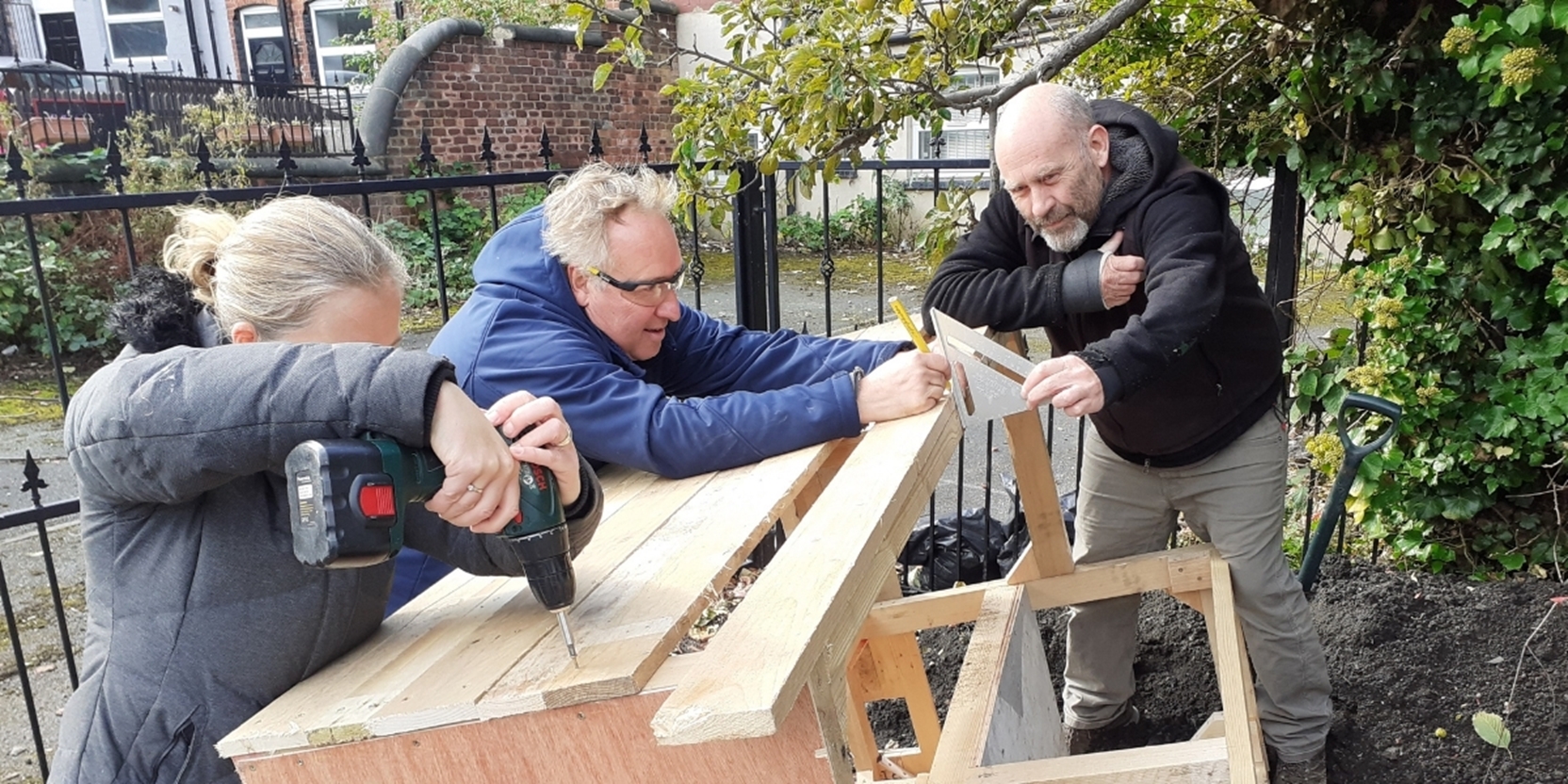
REDUCING WASTE
Reducing the amount of construction waste we produce is important for several reasons. The extraction of raw materials and the manufacturing and distribution of products contributes to global carbon emissions, and to the indirect emissions within our carbon footprint. Along with the rest of the sector, we are experiencing price increases and delays in the delivery of some materials. This is due to increases in worldwide demand as a result of the global pandemic and compounded by Brexit.
It is our aim to minimise the consumption of virgin raw materials and to maximise the value and lifespan of the materials and products we use.
In 2018 we set a target to reduce construction waste intensity (tonnes/100m2 build) by 10% by the end of the financial year 2022 (over a 2017 baseline). At the end of the financial year ended June 2021, we have achieved a 24% reduction, far exceeding the target.
‘Reduce the Rubble’ Research Project
In 2020, we launched ‘Reduce the Rubble’ – a pioneering initiative that sought to drill down and identify every component of waste generated during our build process. The aim was to understand the root causes of waste arising, and to identify how waste could be eliminated, reduced or re-used.
Our most popular housetype – a detached, four bedroom family home from our Heritage Collection was selected and the study was undertaken across three representative sites.
The study identified more than thirty opportunities for reducing waste. These have been prioritised and are being evaluated by our Buildability and Waste Working Group. To date, changes to the size of skirting and architrave have been approved without impacting on quality and customer expectations and changes to ceiling heights are being explored.
Since the project started, more than half (53%) of those working across the three study sites are now sharing their ideas on continuous improvement and examples of best practice with the wider business.
Redrow is a participating member of the Supply Chain Sustainability School’s ‘Waste Special Interest Group’ - a collaborative project with the peer group to research packaging waste at its manufacturing and supply source.
Responsible Sourcing
Through our Purchasing Sustainable Timber Products Policy, we require that all of our timber is certified by either the Forest Stewardship Council (FSC) or the Programme for the Endorsement of Forest Certification (PEFC). This means it is sourced from suppliers who are accredited and where chain-of-custody is maintained down the supply line.
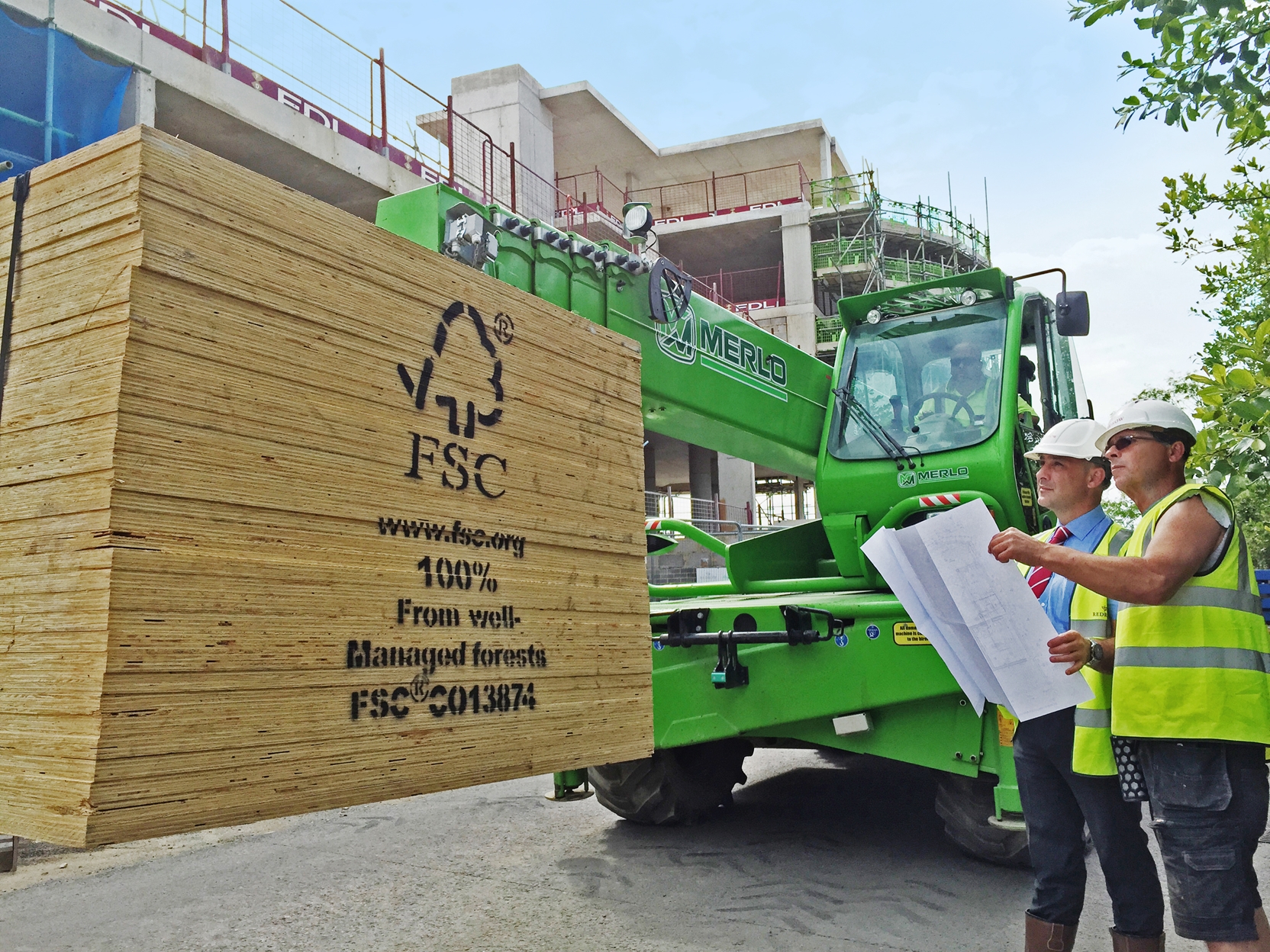
We continue to uphold the principles and processes we developed in partnership with the World Wildlife Fund Global Forest Trade Network (WWF GFTN) before the network closed in 2018.
| 2021 | 2020 | 2019 | |
| 100% of timber responsibly procured | 99.6 | 99.9 | 99.9 |
Partnering With Our Supply Chain
The importance of working closely with suppliers and subcontractors and maintaining a strong supply chain are principles that have long been established within Redrow. A large number of our relationships with supply partners extend beyond 10 years, some in excess of 20 years. The longevity of our partnerships is testimony to the value Redrow and our suppliers and subcontractors place in having a relationship where all parties share a similar vision, and have the working practices required to deliver sustainable outcomes.
By working jointly with our supply partners we can continuously look to improve our financial, social and environmental performance. This year, we have developed innovations in a number of areas including changes to the construction process to improve deliverability and investing in our IT systems to improve the efficiency of materials ordering and payment.
We have taken part in a paint can recycling scheme for almost a decade, previously in partnership with Dulux and now with Crown. Working with our nominated paint manufacturer and our painting subcontractors, empty paint cans are recycled into new products such as plastic piping and outdoor furniture.
More than 26,000 paint cans were recovered from our sites during the year and the subcontractor who made the most significant contribution is being rewarded with benches made from recycled cans.
Furthermore, our pallet repatriation scheme has seen in excess of 39,000 pallets recycled this year.
As a partner of the Supply Chain Sustainability School, we actively encourage our material suppliers to also join as members. Membership allows them free access to training on a vast range of subjects, thereby improving the sustainability of their own business and helping us to respond to sustainability issues in a productive way.
Membership of the Supply Chain Sustainability School and the benefits it brings are discussed regularly both internally and with suppliers. The challenges that the industry faced as a result of both Brexit and the global pandemic left little opportunity for us to effectively promote and increase membership of the Supply Chain School within our supply chain. As a result, membership of the School by our supply chain has remained fairly static at 33%.

Improving the social and environmental performance of our supply-chain
Through our pre-tender qualification process and on renewal of an agreement we assess the performance of our supply partners through our Appraisal process. The assessment looks at a range of environmental, social and governance (ESG) issues including – financial, production, quality assurance, route to market, customer service, energy, transport, health & safety, welfare, discrimination, fair pay unsafe working conditions and compliance with legislation such as the Modern Slavery Act and the Working Time Regulations.
At a more granular level, the Appraisal allows us to maintain a supply chain map which identifies the source of the raw materials and the country of manufacture. This gives us visibility on products and materials that are supplied from countries with a higher social risk profile.
The issues we evaluate during the Appraisal are subject to regular review. It is also used to help us identify areas where we could work collaboratively with partners to deliver improvements such as reducing carbon emissions and waste.
Using the data collected in the Appraisal we have calculated that the recycled content in a typical Redrow home is approximately 11%. This exercise highlighted that the lintels, aircrete blocks, bricks, plaster products and drainage goods that we specify have the highest proportion of recycled content. We will continue to measure this and to work with our supply chain to increase the recycled content - which will reduce both embodied carbon and our reliance on raw materials.
To ensure that everyone remains aligned to our supply chain policy commitments, changes to National agreements are discussed regularly with the divisional commercial teams and supply partners. Matters are also discussed and monitored by the Executive Board through regular reporting and discussions.
Bi-annual formal reviews are conducted with supply partners to monitor performance over the review period across a number of key performance indicators - suitability, quality, service, deliveries, lead times and customer service.
Adapting to a Changing Climate
Mitigating flood risk
To alleviate the effects of climate change and flood risk on our developments, we incorporate Sustainable Urban Drainage Systems (SuDS) on many of our developments. These are designed to mimic the natural drainage of surface water by managing rainfall. Where possible, we design swales and attenuation basins to retain some areas of permanent water which provide a landscape feature, and a water source and habitat for local wildlife.
We have identified an opportunity to develop Rain Water Gardens at our Queenshill site in Newport. The SuDS features will comprise of a crate tank and an attenuation basin, landscaped with a mixture of shrubs, trees and wildflower planting, permeable paving, swale features and a road side rain garden and filter strips. Once completed, it will provide an attractive, plant-rich development which will support the wellbeing of the community and local biodiversity as well as reducing flood risk. This is a nature-based solution with multiple benefits.
- Read about how we are managing climate-related risks in the TCFD section on pages 163 to 167.
- Read about how we are minimising the risk of overheating in our homes on pages 49 to 50.
Engaging across the sector
We are members of the following cross-sector groups:
- Home Builders Federation National Technical Sustainability Committee (NTSC)
Its members review and comment on aspects of government policy in particular what changes are required to technology and building practices to meet future regulations.
- Home Builders Federation Future of New Homes Group
This is a subcommittee of the NTSC. The Group focuses on building performance and during the year it’s priority has been to understand and plan for forthcoming changes to Building Regulations Part L and F, SAP, heat pumps, EV charging and hydrogen boilers.
- Future Homes Task Force (FHTF)
The FHTF brings together representatives from across all sectors that have an influence on shaping new build homes including the government, house builders, utility providers, material suppliers and environmental groups.
The ability to design and deliver low and net zero carbon homes in a realistic and deliverable way will require coordination across many different players in the sector. The Task force is leading on the development of an overarching Delivery Plan which will respond to the key environmental targets - Net Zero Carbon, the natural environment, resources, water and air quality.

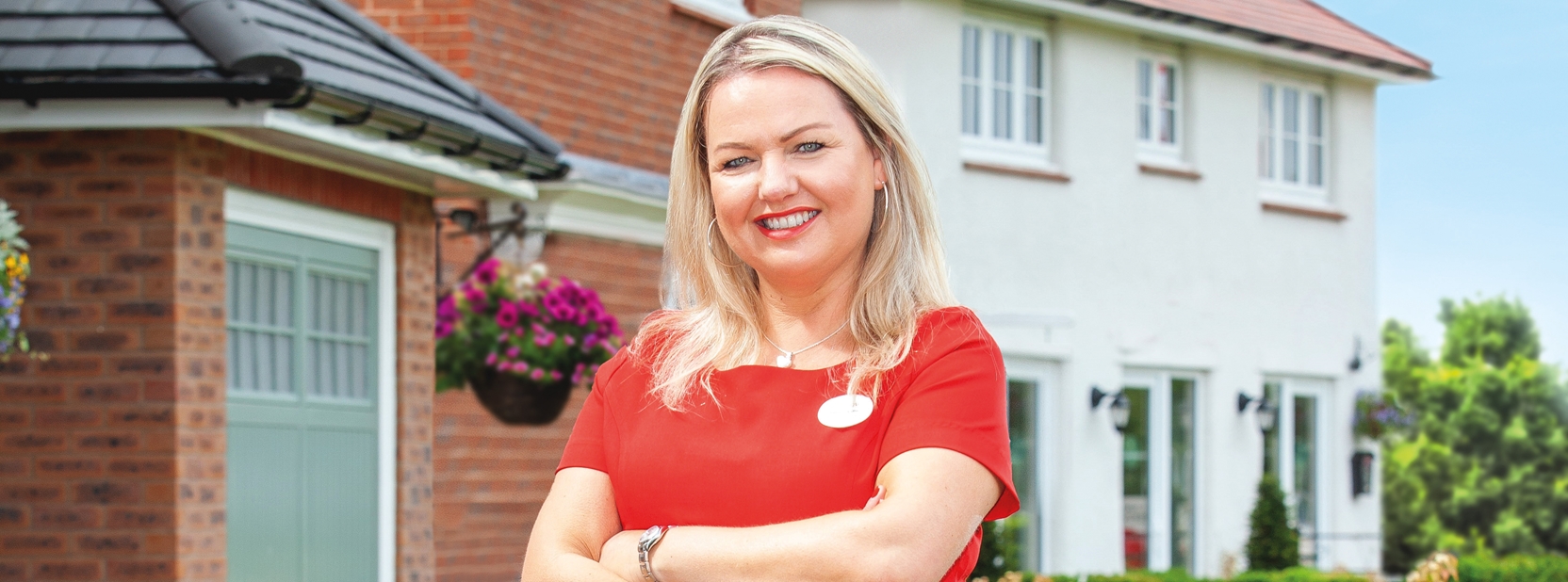
Real Living Wage Accreditation
As part of our commitment to create a supportive environment for everyone who works in the Redrow family, we are proud to now be accredited as a Real Living Wage employer.
This voluntary benchmark is for employers that wish to ensure their staff earn a wage they can live on, not just the statutory minimum, as it is the only hourly rate calculated based on the costs of living.
As well as our own employees our commitment also extends to our suppliers and subcontractors.
We are proud to join this voluntary movement of 7,000 employers who, as the Living Wage Foundation says, are “businesses that recognise that paying the Real Living Wage is the mark of a responsible employer”.
Equality, Diversity and Inclusion (EDI)
We are committed to continuously promoting Equality, Diversity and Inclusion throughout the business to build a culture that is inclusive to all, actively values difference and ensures everyone is treated fairly. Our Policy and all its associated initiatives will deliver an EDI agenda which focusses on attracting and retaining a diverse workforce which promotes an inclusive environment, where all employees are given equal access to opportunities allowing them to contribute their best work and develop to their full potential.
As an ‘Equal Opportunities’ employer and working hard over several years to employ and promote more women in construction and technical roles, we continue to drive towards an all-encompassing culture of equality, diversity and inclusion.
An EDI Working Group was formed in October 2019. The 50 plus volunteer members act as EDI representatives to support and facilitate delivery whilst promoting the policy and its principles throughout their divisions. They represent colleagues and feed back any suggestions and ideas to ensure EDI is always developed and maintained. Every business division and Head Office is represented on the EDI Working Group.
We also have a dedicated EDI intranet page and employees are encouraged to share stories and events from a diverse range of cultures. For example, we have celebrated Chinese New Year, championed women in construction on International Women’s Day, shared articles and blogs about Ramadan and an inclusion calendar is available for all to learn and share information on key dates and celebrations.
Over 30 virtual workshop sessions have been delivered to more than 350 colleagues, including Executive Board members and leadership teams, to inspire managers to be inclusive, effective and to encourage and embrace diversity in all aspects of the business, ensuring that colleagues’ similarities and differences are celebrated in an environment where all employees can fulfil their potential. We have e-learning outlining the benefits of EDI available to everyone in the company.
We have also introduced specific diversity targets to our recent recruitment campaign for new graduate employees. This was a success with a significant increase in the number of females and employees from BAME (Black, Asian or Minority Ethnic) backgrounds (over 30% female recruits and 25% from a BAME background).
EDI will be embedded throughout all stages of an employee’s journey ensuring all individuals receive fair and equal treatment from recruitment and selection, to on-boarding and induction, learning and development, promotion and career progression to employment benefits, terms and conditions and facilities.
Redrow is also proud to be a member of Inclusive Companies, the Diversity Jobs Group and Business Disability Forum. Working with the Business Disability Forum to become Disability Confident.
We want employees to feel they work within an open and inclusive culture, where they can come to work and be their true selves and fulfil their potential with the relevant support. We want colleagues to feel valued, respected and recognised, feeling empowered in their role to contribute their best. We also want to attract and retain a diverse talent pool, with different skills and experiences, bringing creativity and innovation.
Employee Engagement
Redrow 2025
This is an ambitious project focused on accelerating innovation across the business and commenced during the year with the biggest team consultation in Redrow's history.
Over 2,000 colleagues input their thoughts and ideas via a combination of surveys, virtual conferences, focus groups and one to one meetings. All the ideas have been collated and are helping to shape strategy and development projects which will be formally announced later in the new financial year.
INsight Employee Engagement survey 2021
The results from our latest survey in March 2021 showed that the overall Engagement index had increased slightly to 82%, a particularly pleasing result in the context of the past year. We were pleased to maintain a high response rate (81%) and high scores in areas such as “proud to work for Redrow” (93%) and “would recommend Redrow to a friend” (88%).
Highlights are:
- 93% proud to work for Redrow;
- 88% would recommend Redrow as a place to work;
- 95% of colleagues believe we have a good future as a company;
- 89% of colleagues feel supported by their manager and 89% believe their manager genuinely cares about them as a person;
- 87% of colleagues believe we are committed to promoting a culture of equality, diversity and inclusion; and
- 82% believe the company cares about their personal health & wellbeing.
Workforce Engagement
During the year we formed a national Workforce Engagement group of representatives from across all of our divisions. This forum will enable the sharing of ideas and suggestions from the workforce with our Nominated NED for Workforce Engagement, Nicky Dulieu. Nicky hosted our first virtual meeting in May where discussion points raised included communication, benefits and working arrangement. Feedback from the representatives was unanimously positive welcoming the openness of the debate.
Nicky gave feedback to the Board and we were pleased to implement the following improvements:
- All Sales Consultants to have one weekend off every 6 weeks
At Redrow, a healthy work-life balance is very important to us and we understand that our employees want to have the flexibility to make plans and enjoy time with their friends and family. Our Sales Consultants provide continuous support to our customers 7 days a week and for this we are exceptionally grateful. That is why from October 2021, all of our sales consultants will be given one weekend off every six weeks.
- Quarterly Update from our Managing Directors
It was great to hear our representatives share best practice of what works well in their division and something that was very clear was the appreciation of regular updates from the Managing Director or Head of Department. The whole group felt strongly that this was something all colleagues would benefit from. Moving forward we have asked all Managing Directors and Heads of Department to provide an in person or video update to provide an overview of news within each division and beyond. We hope this will support us in keeping everyone informed and up to date across the business.
- Improved PPE for employees and visitors
Over the last 12 months we have made great strides in continuing to embed equality, diversity and inclusivity in everything we do here at Redrow. Working closely with our ED&I representatives across the divisions has allowed us to better understand how we can continue to adapt and make changes for the better. Feedback from the workforce engagement group and our representatives has highlighted a key area for improvement which focuses on our PPE offering and the facilities accessible to females on site. We are currently in the process of reviewing our PPE to ensure that this is suitable for all colleagues and visitors who come to our sites, as noted earlier on pages 41 and 42. This includes widening the range of sizes for boots, high vis and hard hats.
The group will meet every 6 months from now on and will be able to table comments in between.
Learning and Development
Learning & Development continues to be at the heart of our business. This year we have seen a successful move to a more dynamic and flexible approach to our training by delivering shorter focused virtual sessions. In total we have delivered 4083 training days, overall this has led to a reduction in training days per head but a more effective and efficient delivery method.
We have also seen great success with our external partners who have switched to remote delivery, this has meant our employees have still maintained high levels of engagement and learning via Google Classroom and virtual environments. Our new remote delivered programme in the form of our Level 4 Apprenticeship in assistant site management operated by NHBC has been a great success and the added flexibility of remote learning has been fully embraced.
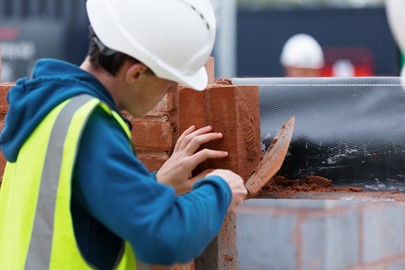
In addition to these successes we have also invested in upgrading our Learning Management system, Your Learning, improving the user journey and enhancing resources through internal development and hosting of external content and resources.
We are committed to succession planning and developing the next generation of homebuilders and are pleased to have had 211 internal promotions in the financial year.
Image: Redrow apprentice learning bricklaying at the NHBC Training Hub
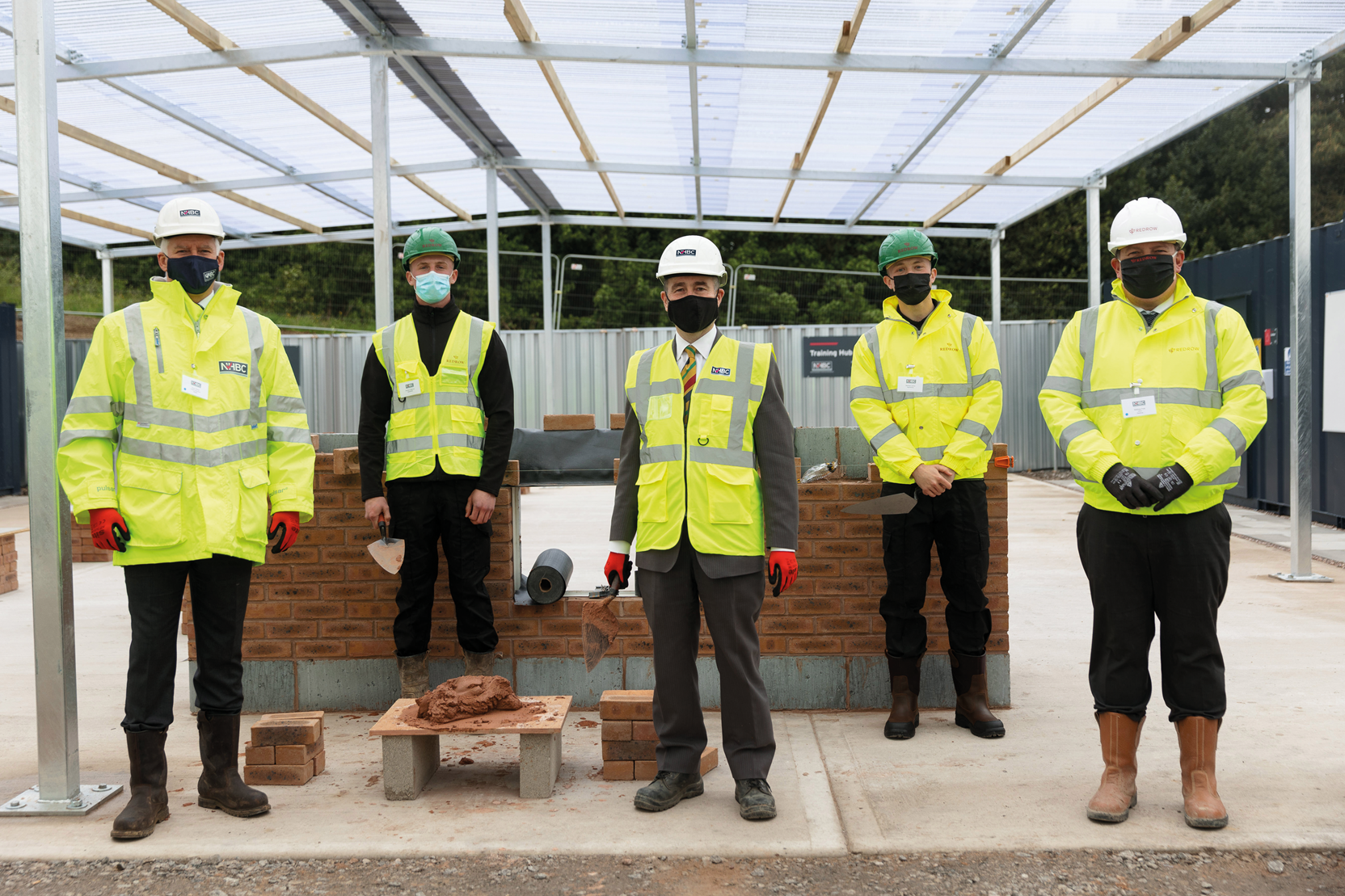
This has been developed by Redrow on behalf of the NHBC.
The Hub has a clear focus on the skills needed in the house building sector and on quality issues within brick and blockwork. Through upfront intensive blocks of learning rather than day release, our aim is to produce bricklayers who can positively contribute onsite early in their apprenticeship and complete their programme within 18 months.
This one-of-a-kind, purpose-built facility will immerse bricklaying apprentices in a realistic working environment. The site resembles a typical site compound, with a large covered central space for practical work alongside high specification classrooms and welfare facilities. The Hub design was informed by an industry working group and built in partnership with Redrow to meet the very specific needs of all housebuilders.
Redrow Housebuilding Degree with Liverpool John Moore’s University and Coleg Cambria
Fully funded by Redrow, this specialist degree is designed to provide support and on the job experience, while expanding knowledge in all areas of construction technology and management. From building regulations, surveying and setting out, project management and health and safety to construction law, maths and economics, the syllabus provides a fantastic opportunity to enhance understanding of our business and the wider industry.
We originally offered this as an upskilling option for our existing employees and our first cohort has graduated this year. In 2020 we opened the degree to new entrants for the first time and recruited 16 youngsters who had completed their A levels and were looking for a “learn and earn” option. We were delighted with the calibre of the applicants and hope this will prove a successful pipeline for future talent.
Graduate Opportunities
We realised in the summer of 2020 that our swift return to production put us in a strong position to offer opportunities for graduates who had seen their career options limited by Covid. We opened up 30 training positions across our divisions and group support functions.
Interest was high with over 1100 applicants and we were delighted with the calibre. As part of our drive to increase diversity in our workforce we ensured that our recruitment process was as inclusive as possible and this resulted in an improvement to 25% of the successful applicants being from a BAME background and over 30% female.
Conscious that these new colleagues were largely working from home initially and would not have benefited from building working relationships as quickly as usual we designed a “virtual induction” process which has continued throughout with regular catch ups and introductions to the leaders across the business.
Health & Wellbeing
The Company recognises that the physical and mental health and well-being of its employees is vital to the success of the business.
During the COVID-19 lockdown period and in the time since, there has been an increase in the frequency and quality of employee communications with a particular focus on supporting the whole family. We have signposted quality educational resources to support employees who were homeschooling their children and hosted workshops with one of our charity partners, the NSPCC, on childrens’ mental health, resilience and on-line safety.
 Image: Parental support for colleagues as advertised on the Redrow intranet, Engage
Image: Parental support for colleagues as advertised on the Redrow intranet, Engage
We have continued to train Mental Health First Aiders across the Divisions, in both offices and onsite and have implemented support mechanisms for them including a closed forum on the Company’s intranet and a Buddy System.
We have continued and enhanced our promotion of MyLife, our employee assistance programme which is available to all employees, subcontractors and their families 24/7.
Throughout the periods of full and partial lockdown and in the return to workplaces we have consciously adopted an approach of more personal engagement with employees, with the HR Business Partners supporting our people to manage their personal challenges on an individual basis rather than one size fits all policies.
We have introduced a fortnightly Health and Wellbeing newsletter distributed to colleagues across the business giving useful tips and links to quality resources.
We have facilitated many new online sessions for employees from yoga and mindfulness to financial wellbeing webinars hosted by the Company’s pension provider.
The HR department has a dedicated team focusing on health and wellbeing to ensure that health remains a key priority and that the wellness initiatives in place are fit for purpose.
As part of our commitment to social mobility we tasked our current Graduate Trainee cohort to identify and engage with schools close to a Redrow development with a high pupil premium that would benefit from the provision of donated educational wildlife resources.
The projects supported their development in team-working and included the project management of the design, creation and delivery of wildflower planters, bug hotels, bird boxes, mud kitchens and living walls from recycled and sustainable materials, all agreed in consultation with the schools and children. The teams approached our subcontract partners for donations of materials and our apprentices and site teams helped build the items and then provided delivery to sites.
Children across the country were given the opportunity to immerse themselves in the natural environment, while contributing to our communities at the same time.
Schools in Cheshire, Wakefield, London, Newport, Deeside, Oldham and the South Midlands all benefited from the work of Redrow graduates.
Karen Jones, HR Director of Redrow, commented "Our graduates have had to project manage the design, creation, and delivery of wildflower planters, bird boxes, bug hotels, mud kitchens and other creative items, using sustainable and recycled materials.
They worked with our site teams, trade apprentices and subcontractors to build the items, and provide the plants, seeds and flowers. We think they have done a fantastic job and are proud of what they have achieved and would like to thank everyone involved for providing them with support.
Redrow’s well-established Graduate Community Programme has long benefitted local neighbourhoods. The latest outreach has been adapted to take social distancing regulations into consideration, but we were keen to keep adding value to the communities we are at the heart of."
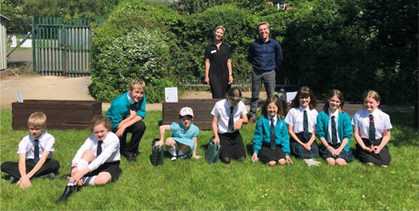
Image: Graduate Rebecca Blott with children from Nicholas Hawksmoor Primary School in Towcester, Northamptonshire
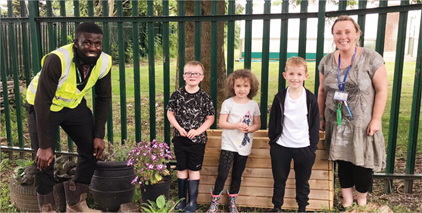
Image: Assistant Site Manager Obie Ebizie with children from Whitegate Primary School in Oldham, Lancashire
Community Engagement
In addition to the monies Redrow invests to fund improvements to local communities linked to planning consents, many of our divisions operate voluntary Community Funds. Applications are invited from local charities, community groups and worthy causes in the locality of our developments and considered by a funding panel with the objective of sharing the funding across a diverse range of local projects that would benefit.
Examples of the types of organisations and projects supported in this way during the year include:
- A variety of local junior sports clubs to provide equipment;
- Food banks;
- Local primary schools; and
- Community care and support groups.
We are mindful of the extra pressures charities and community groups have faced this year because of COVID-19.

